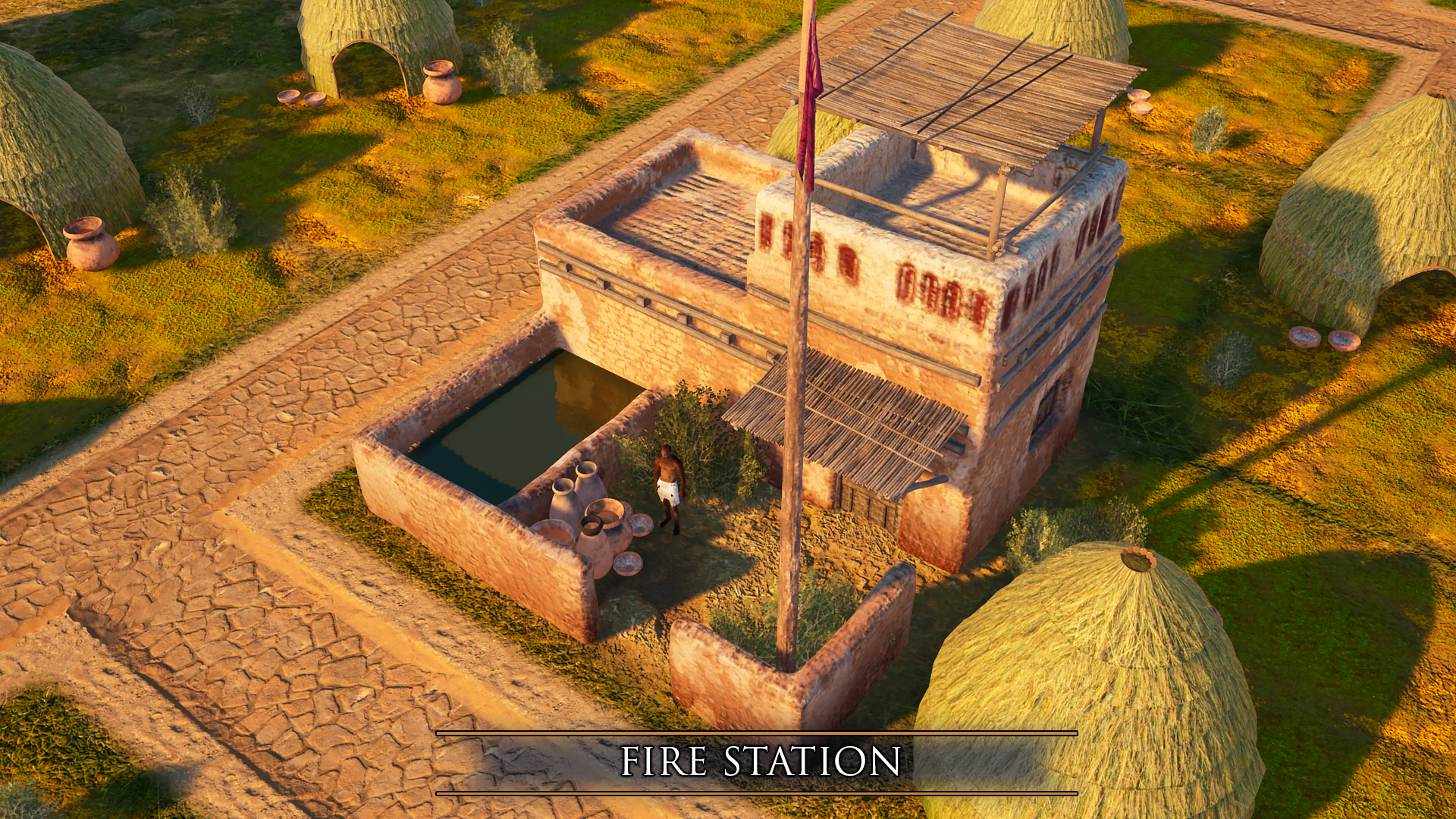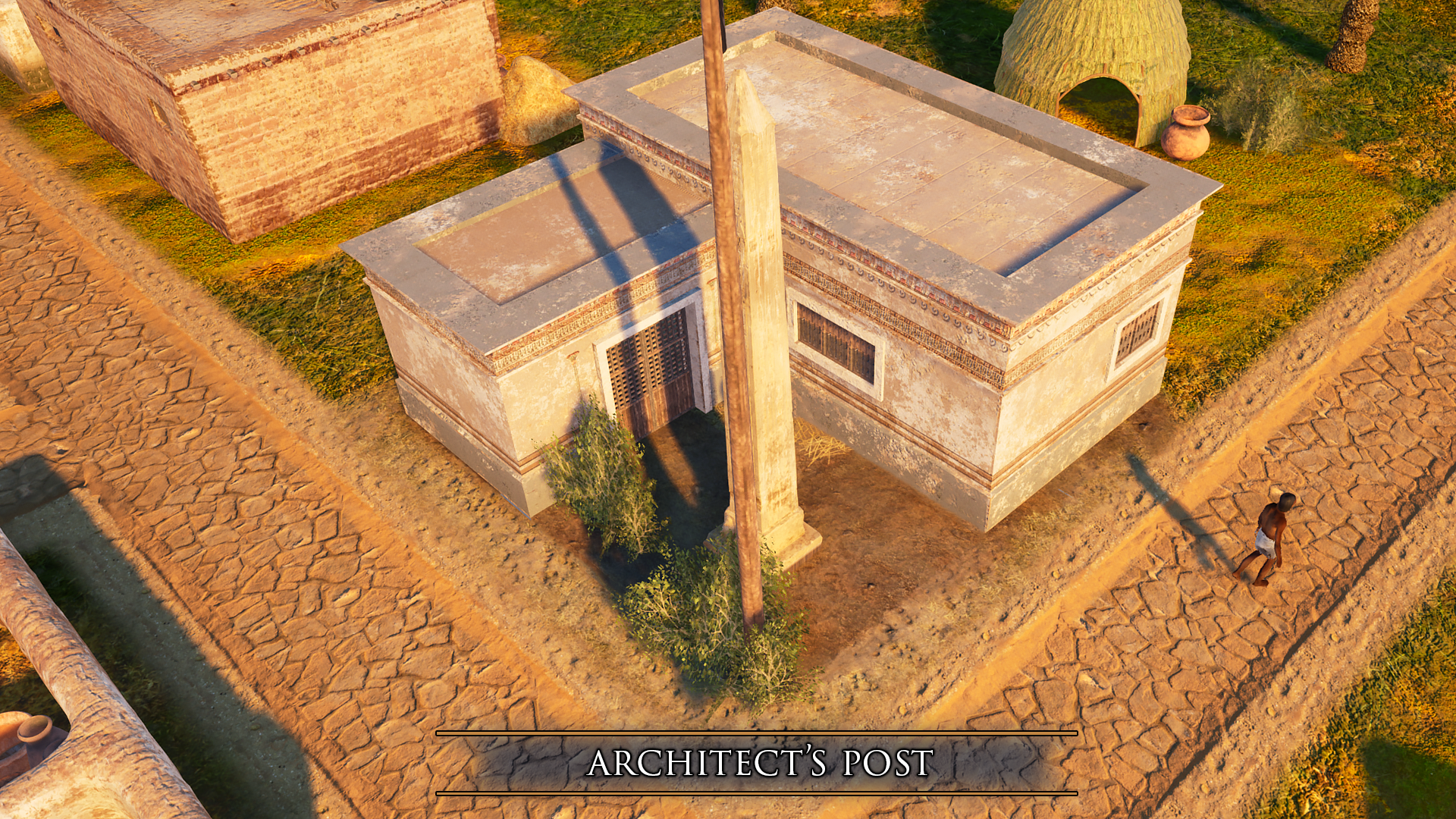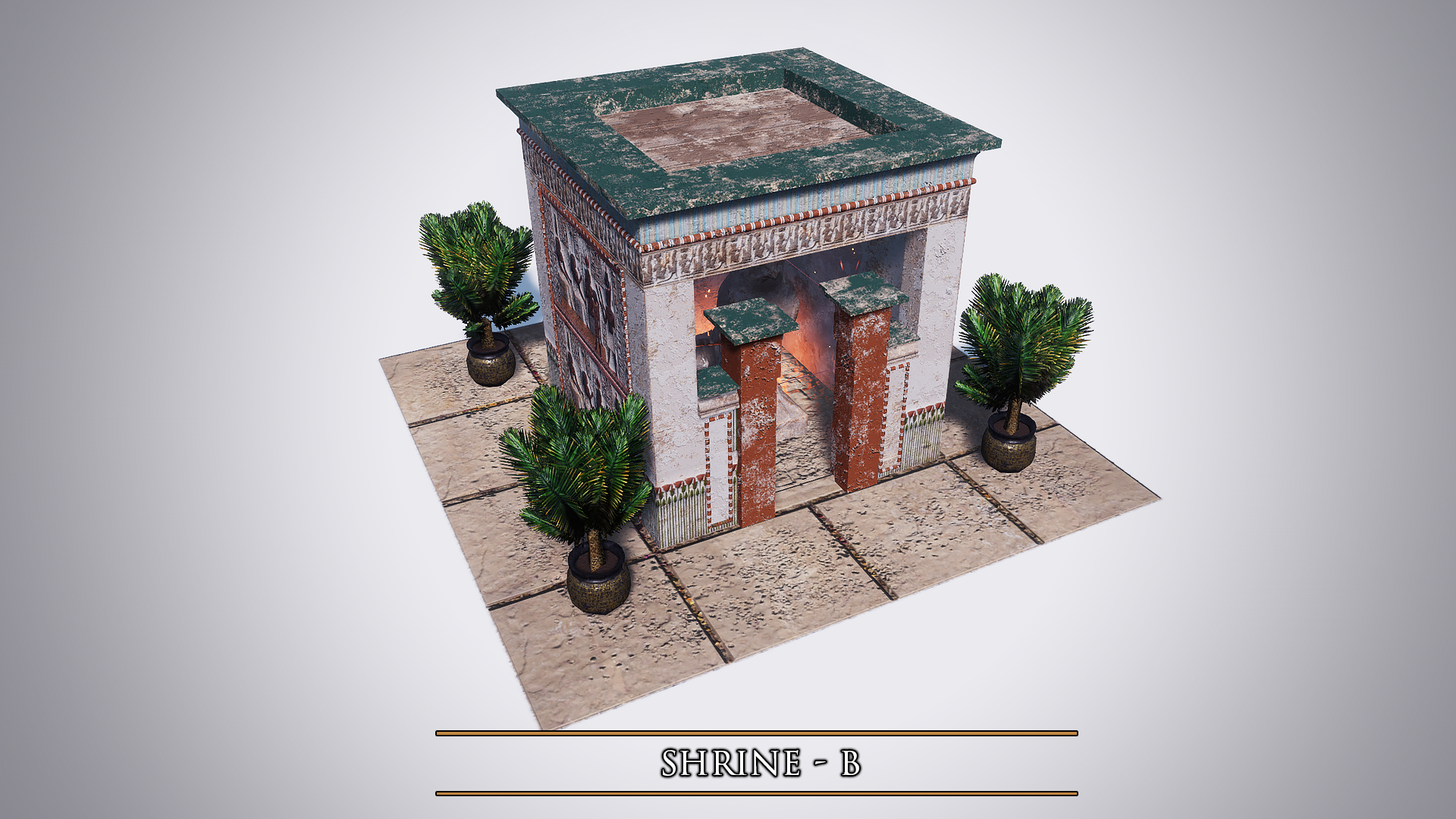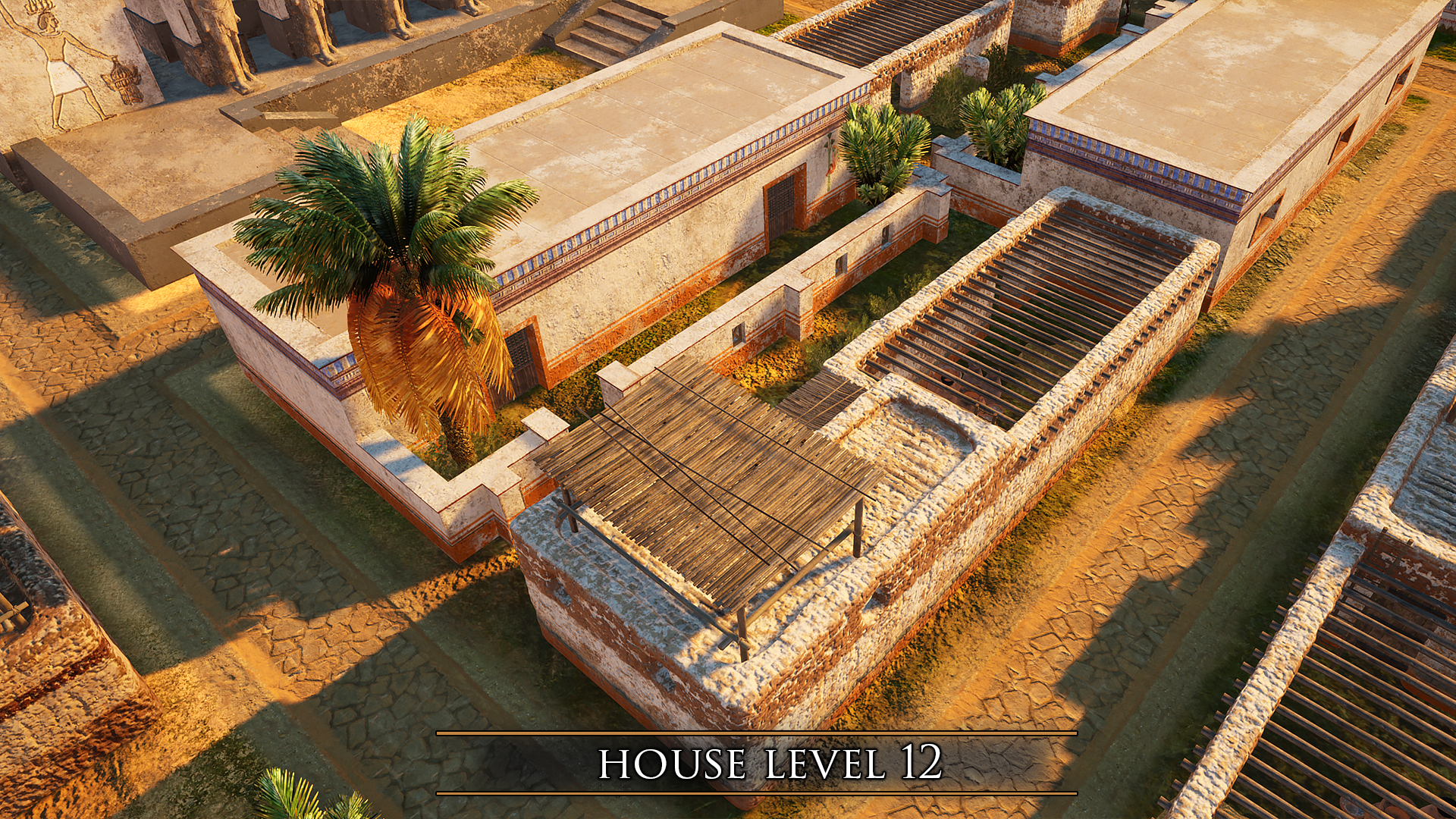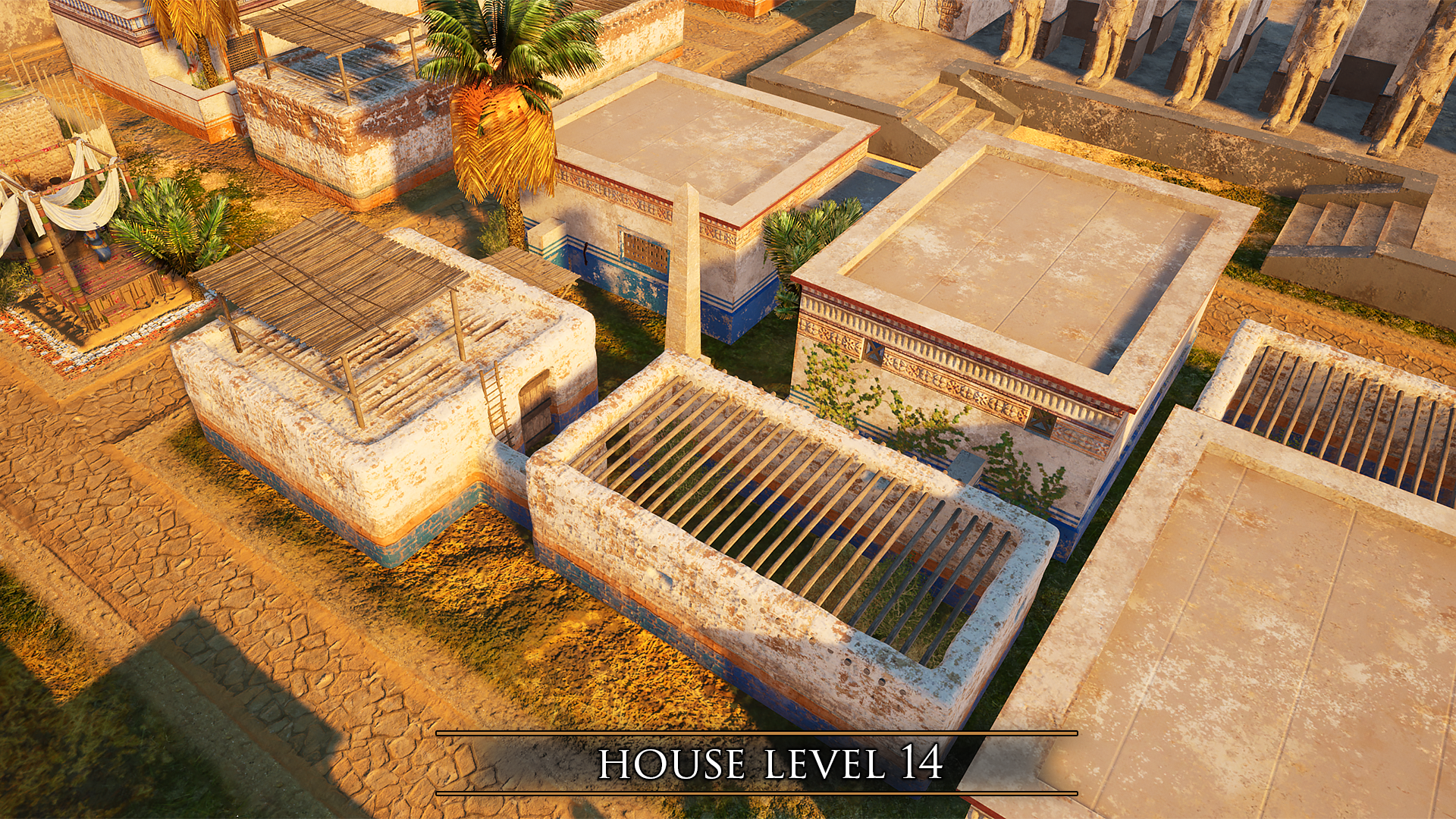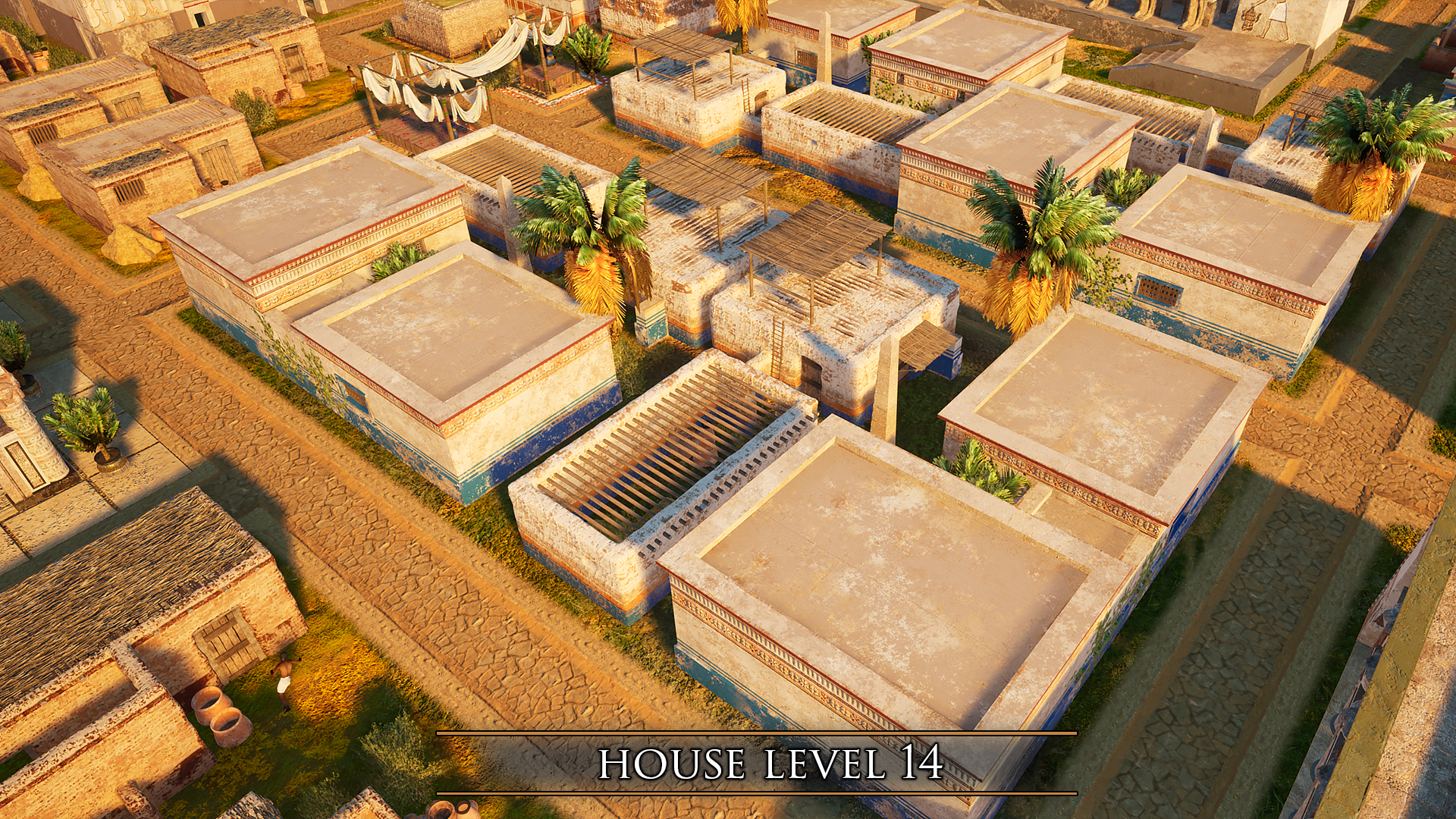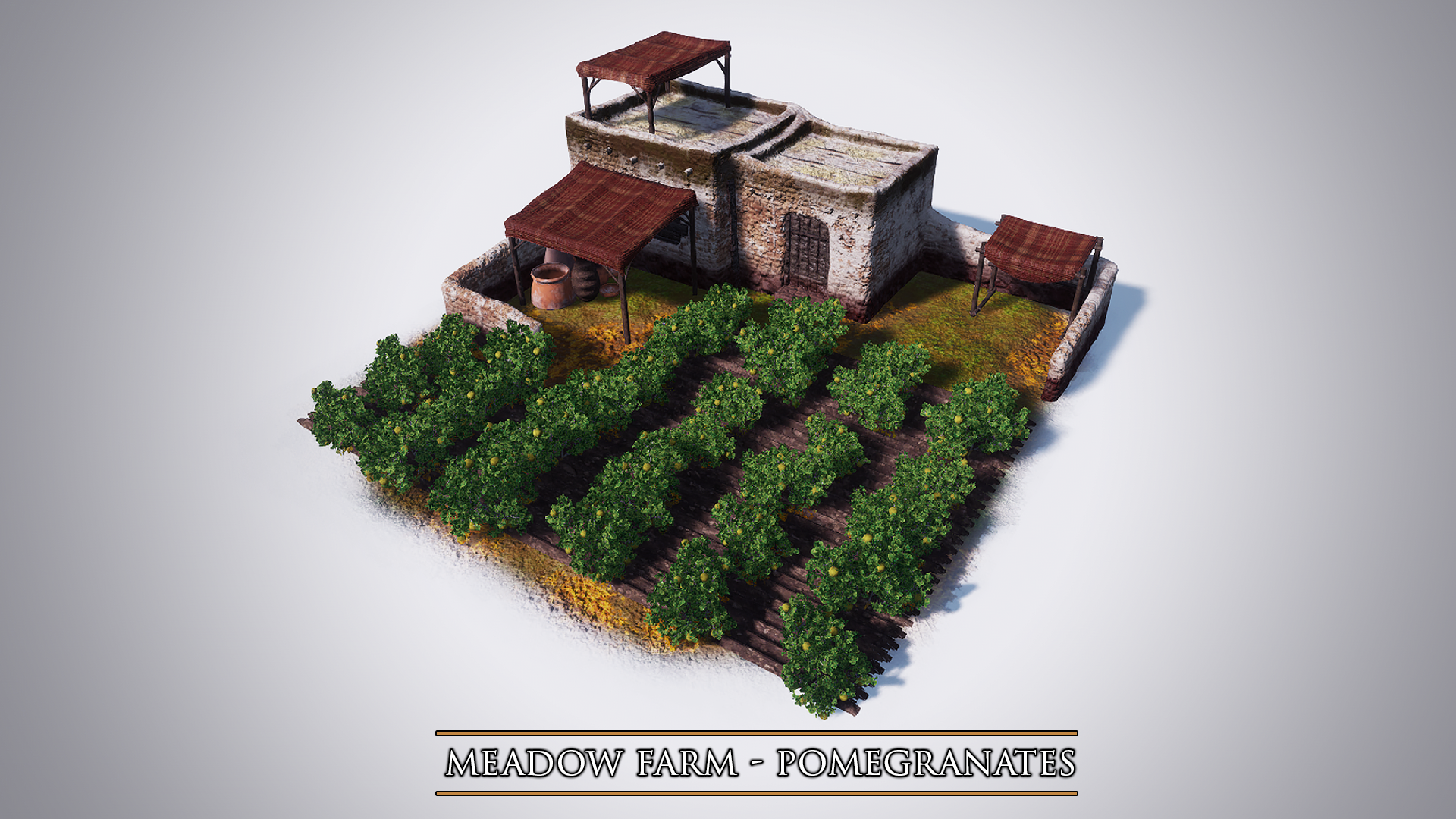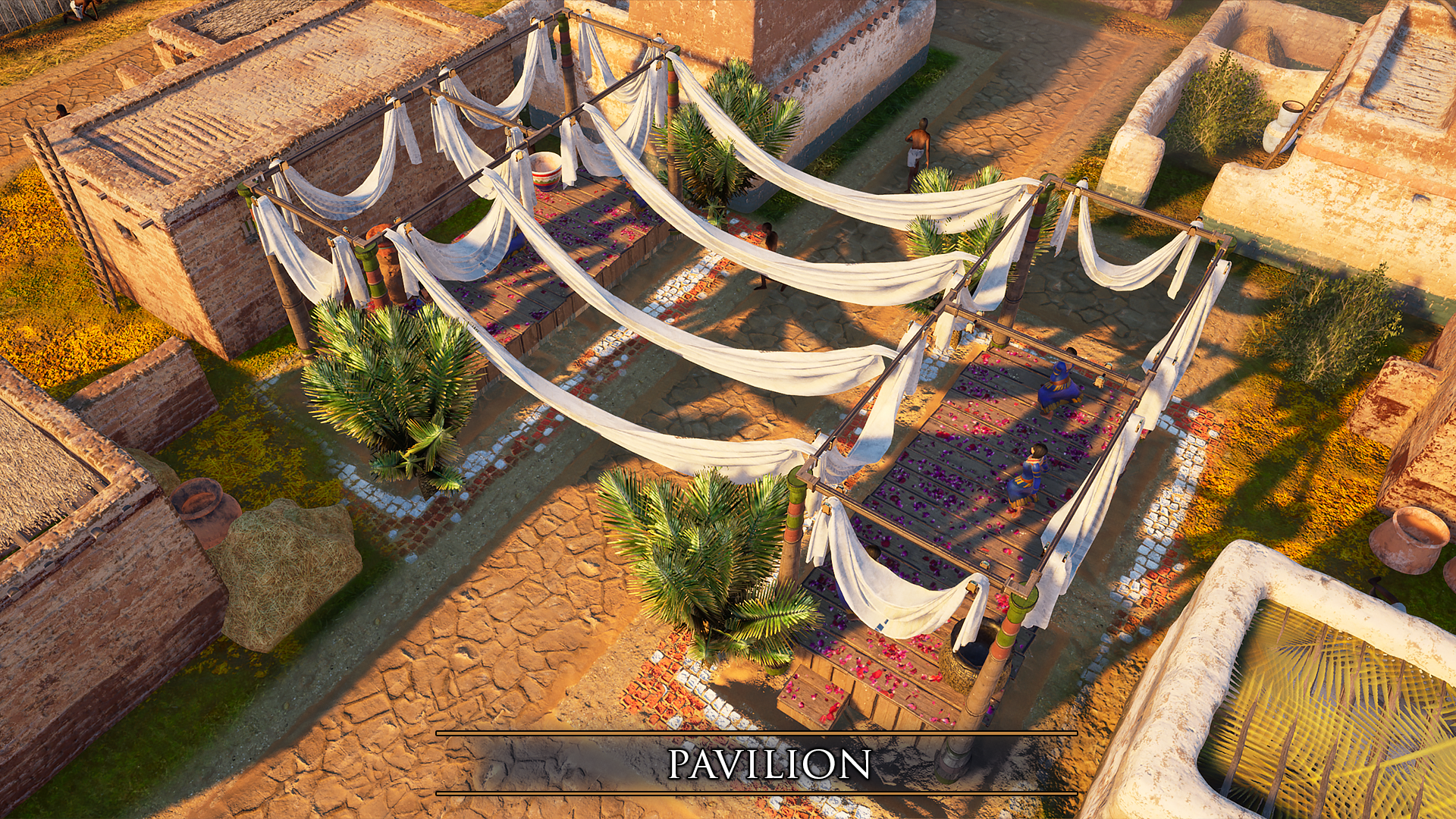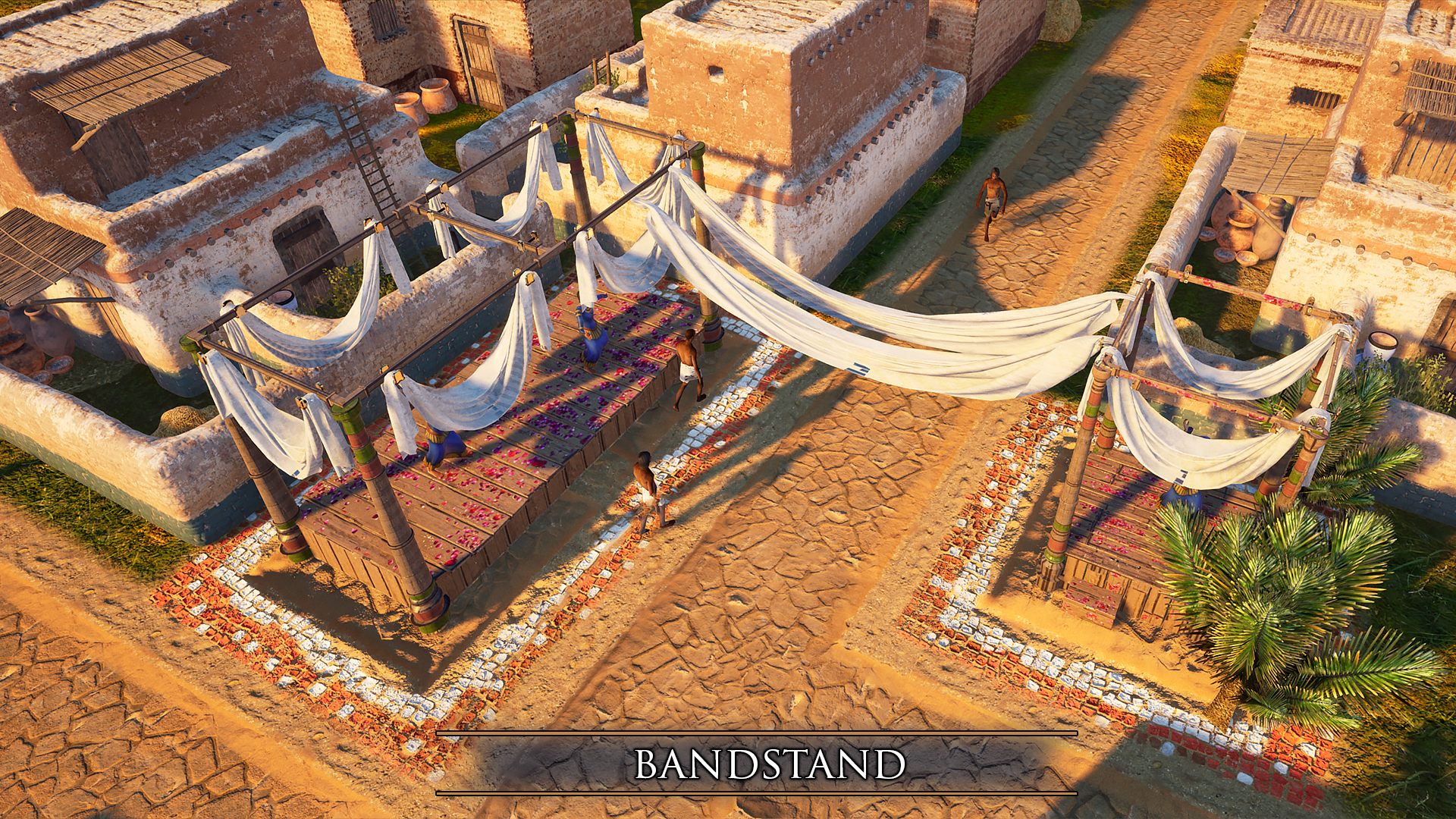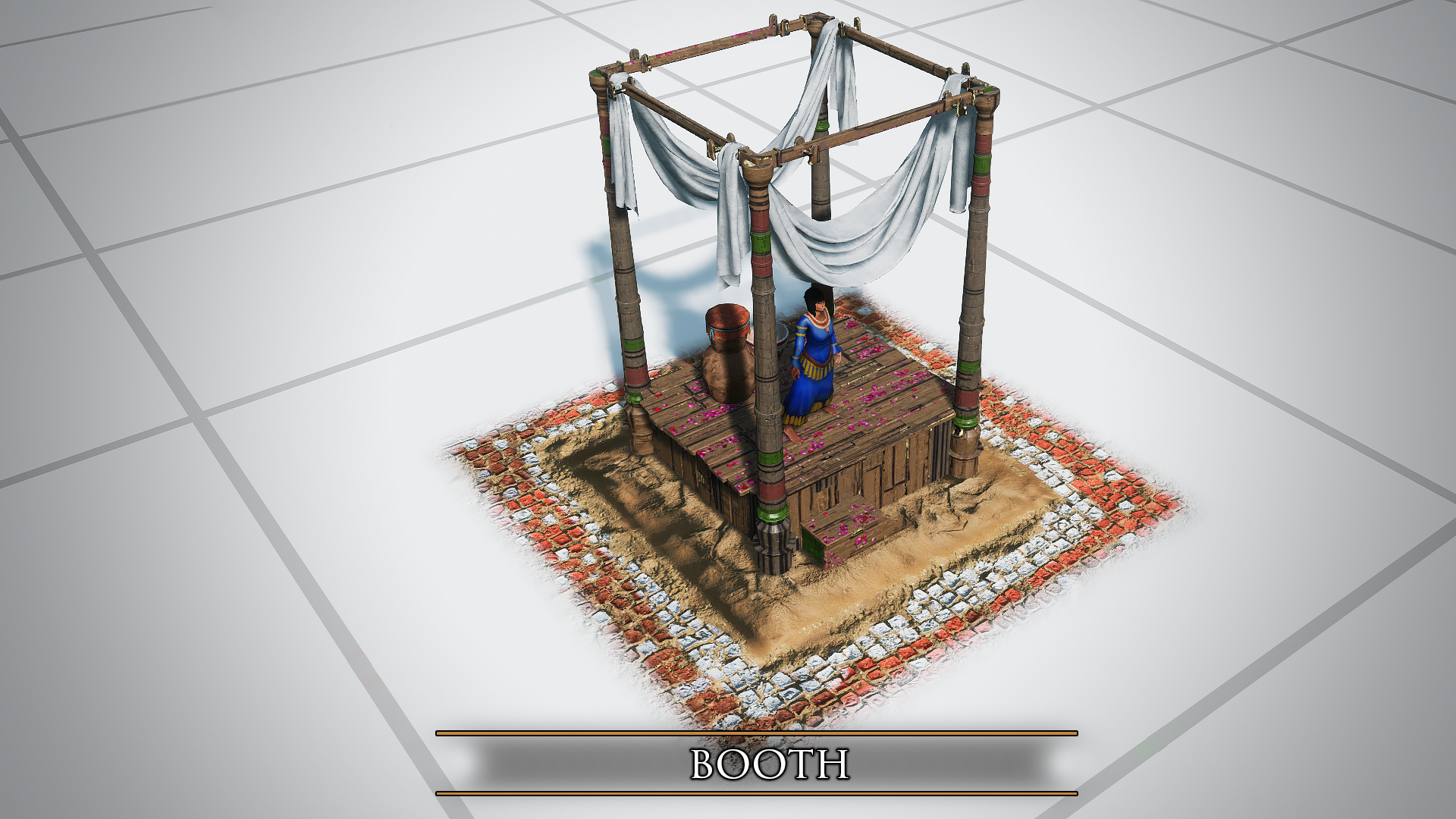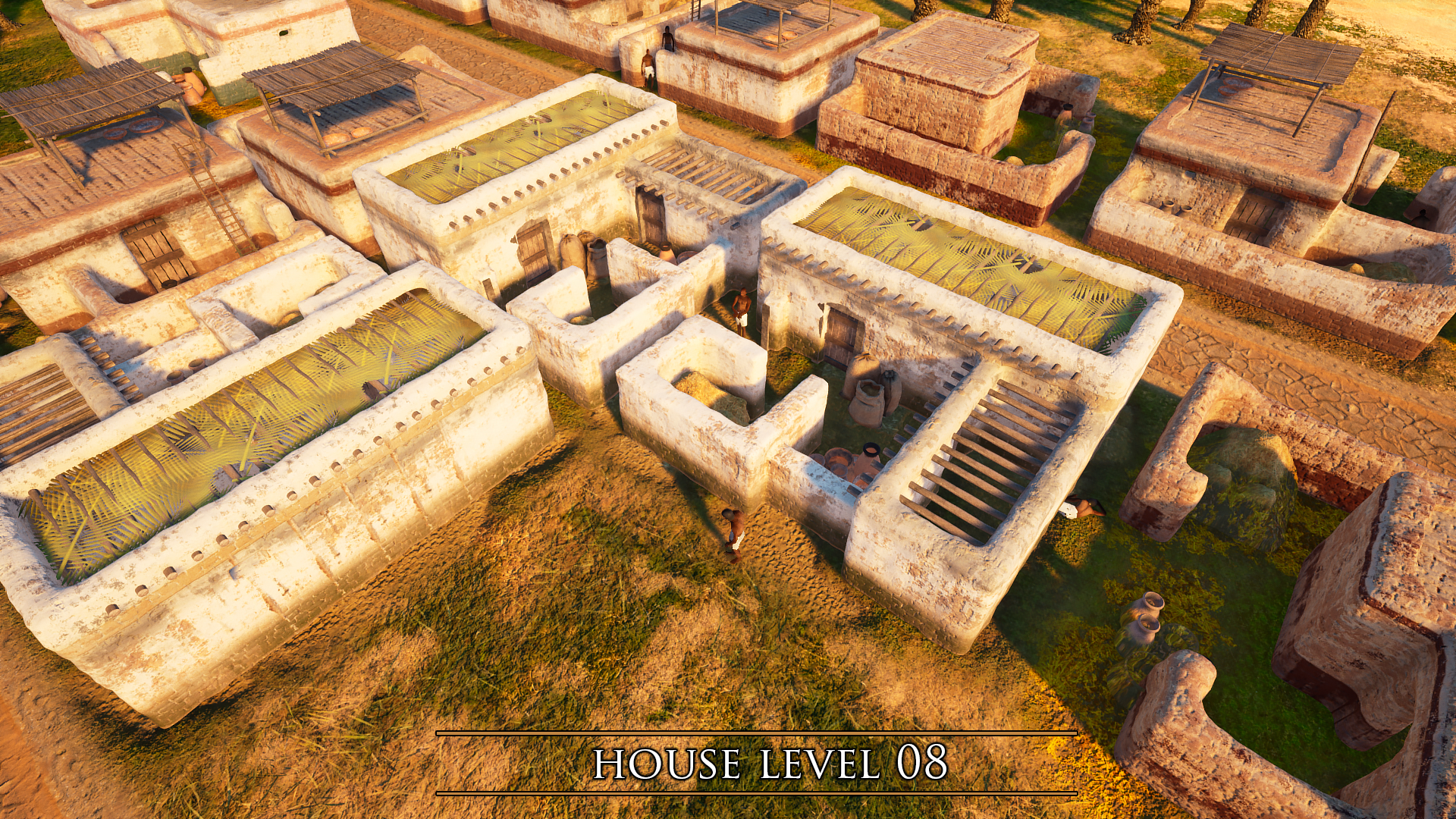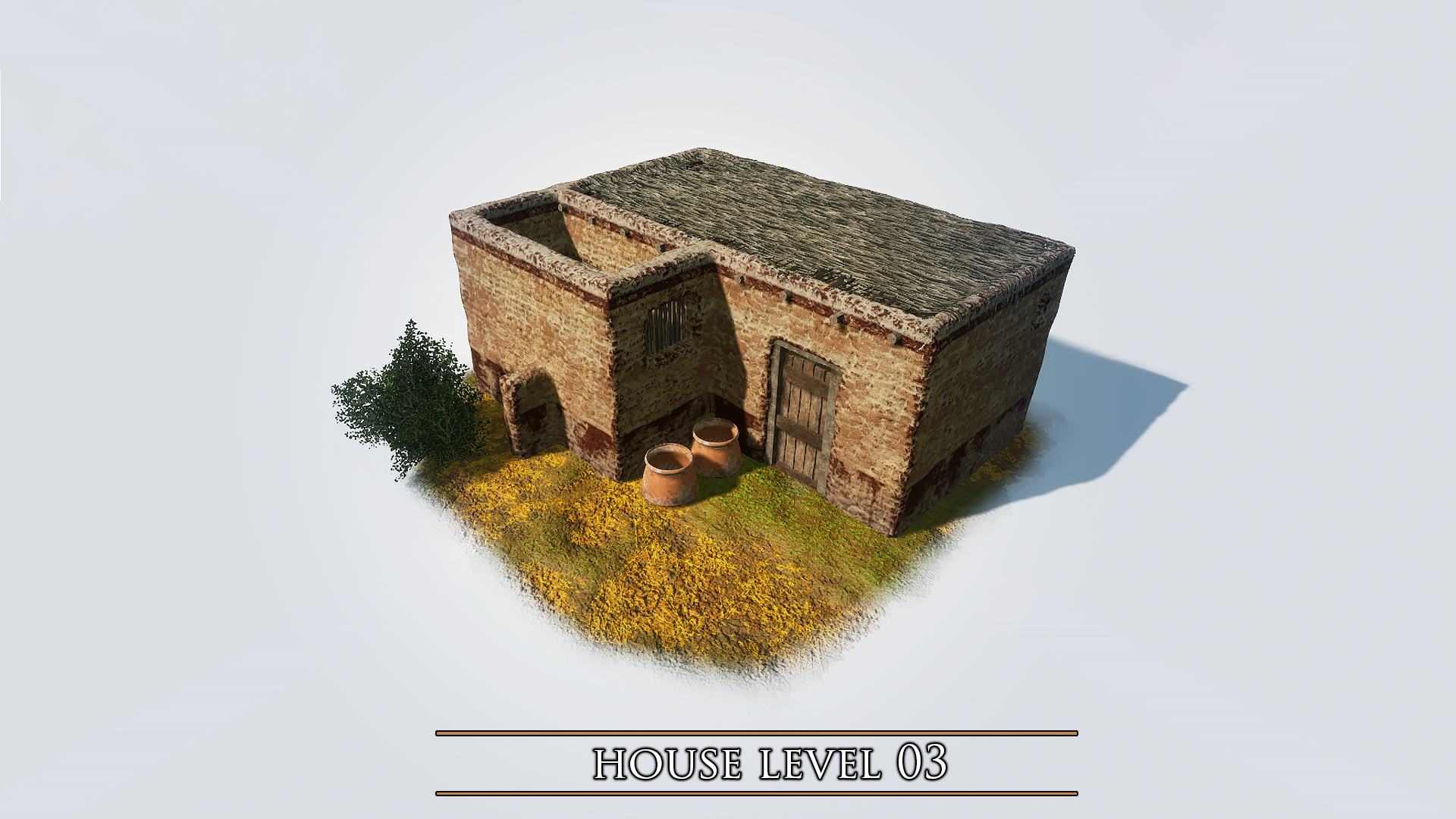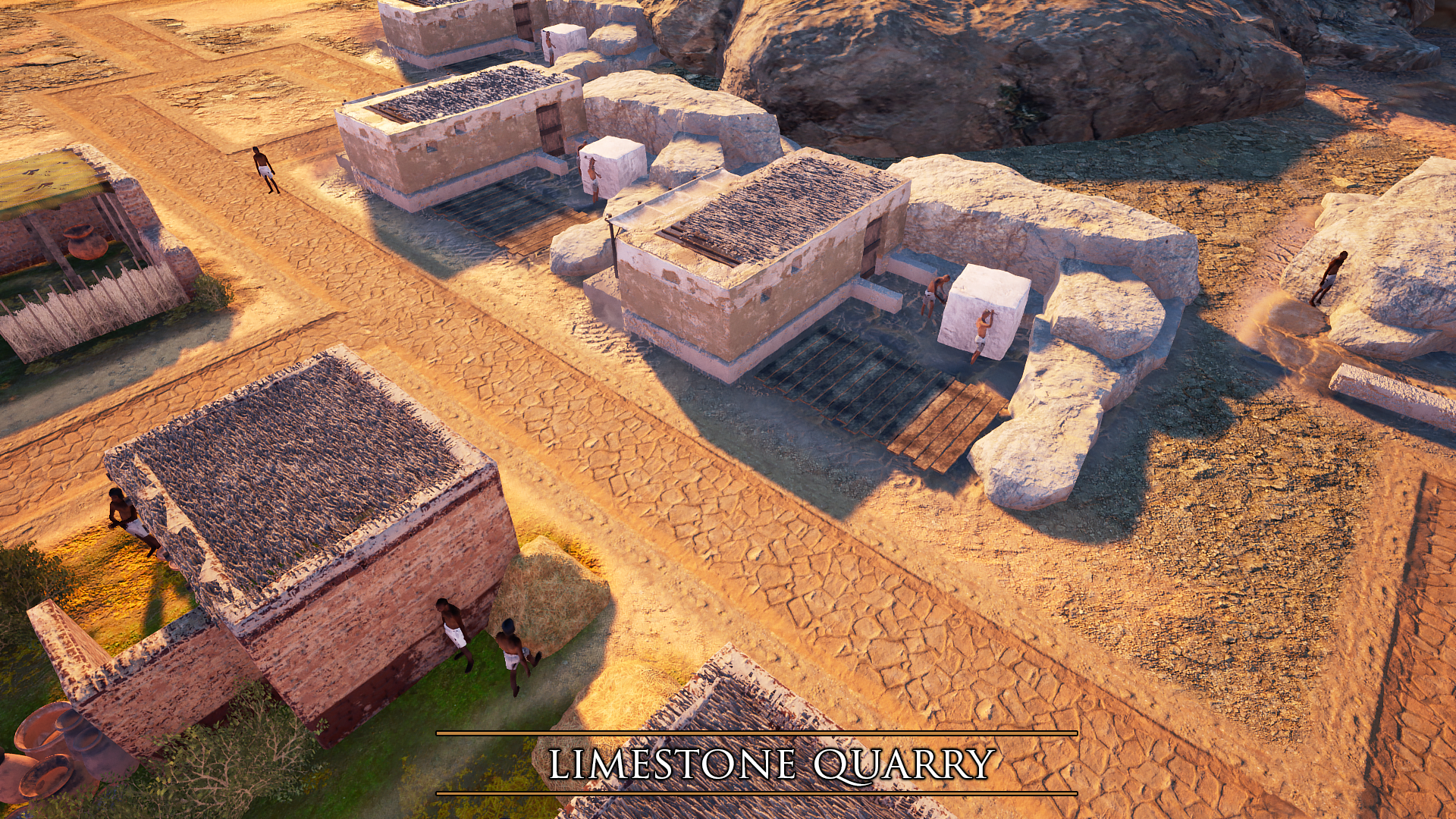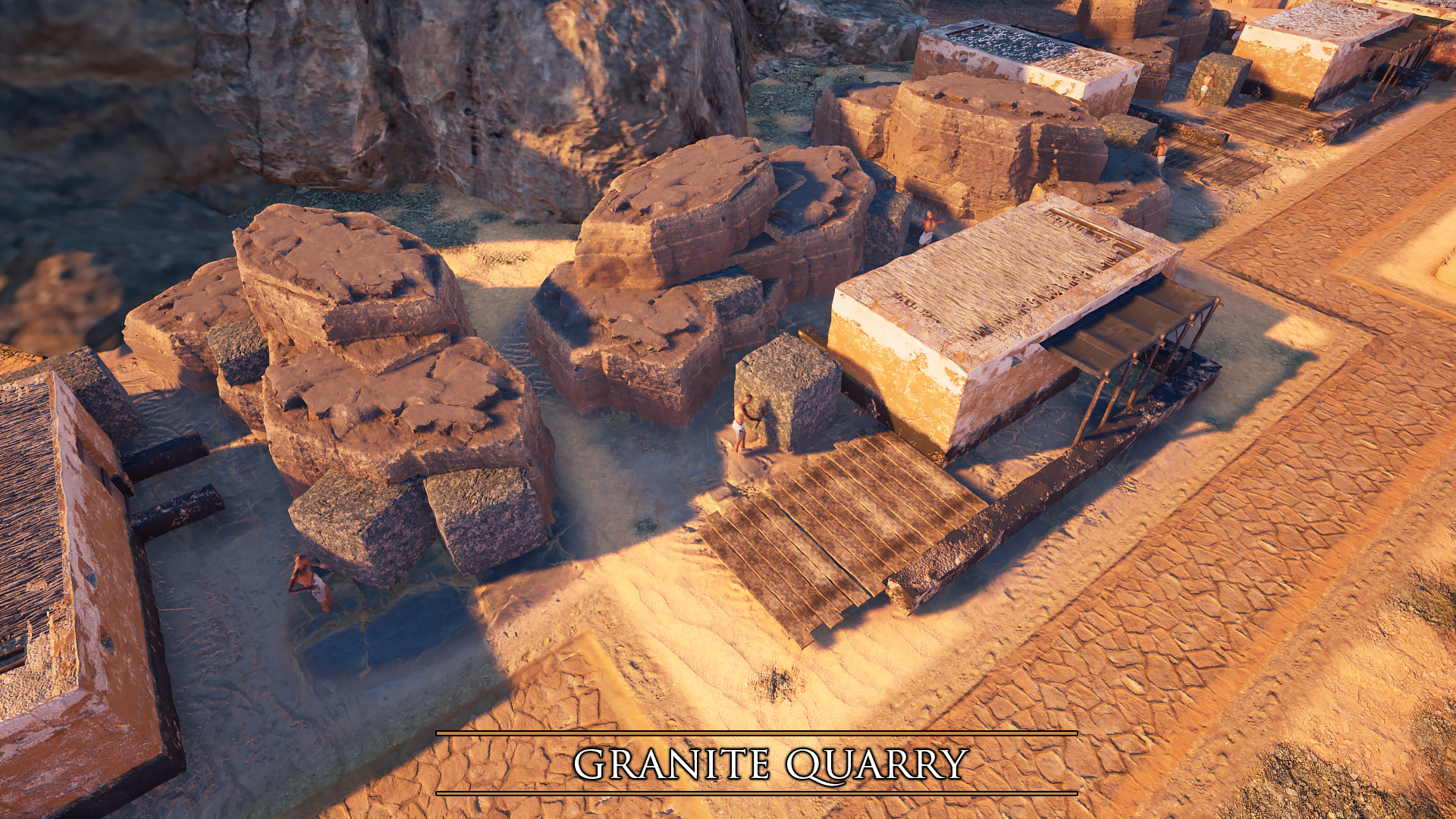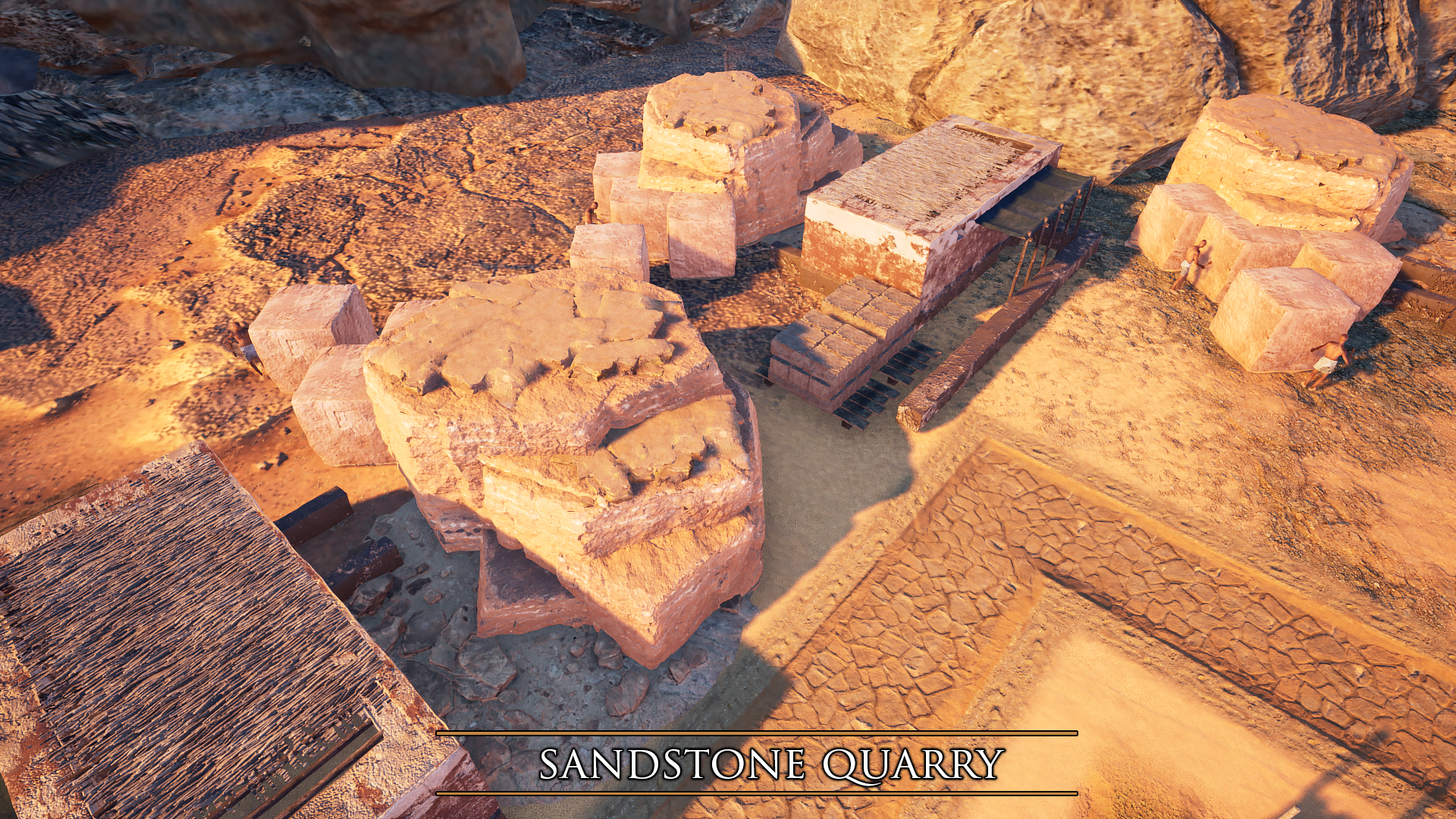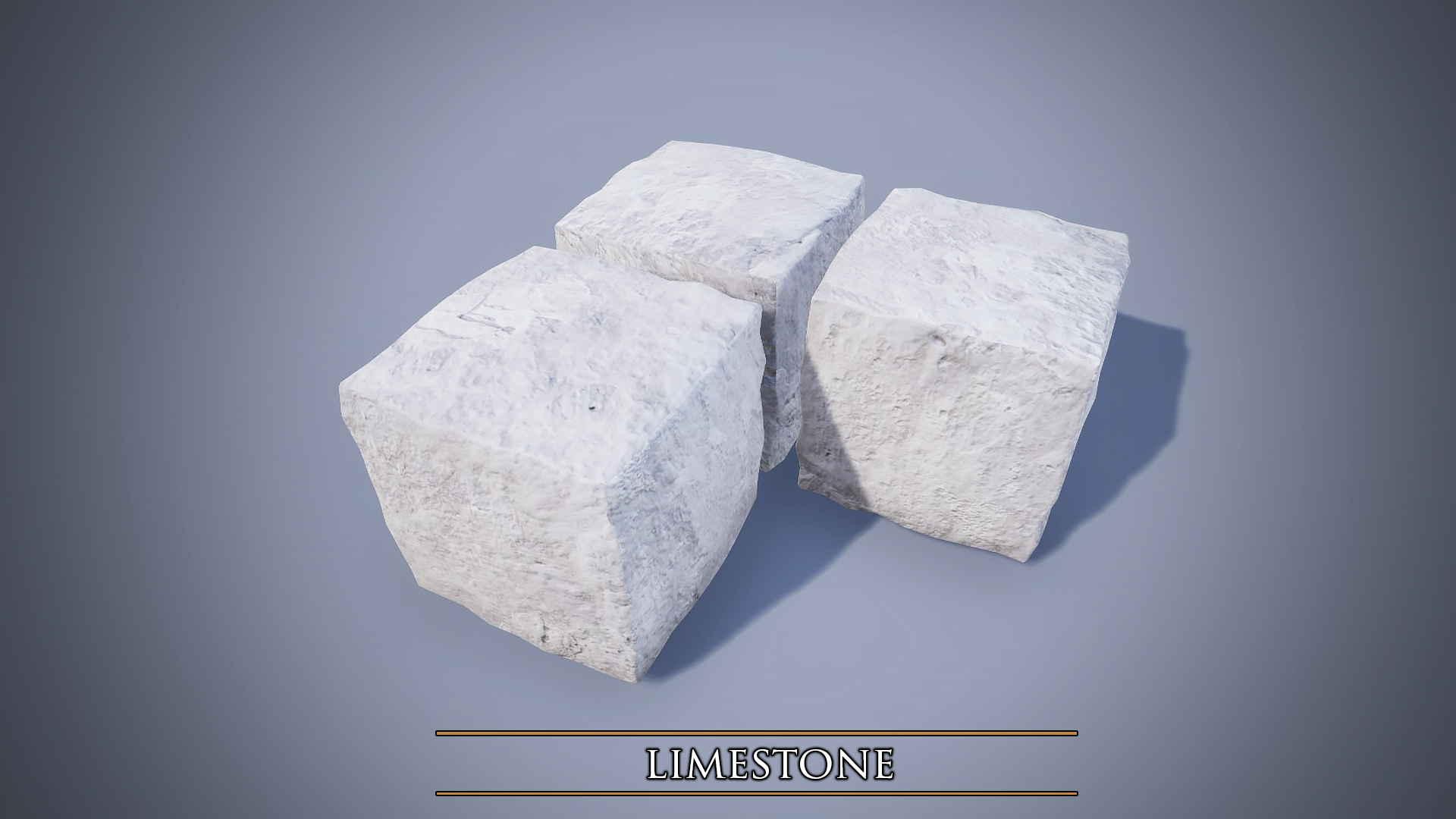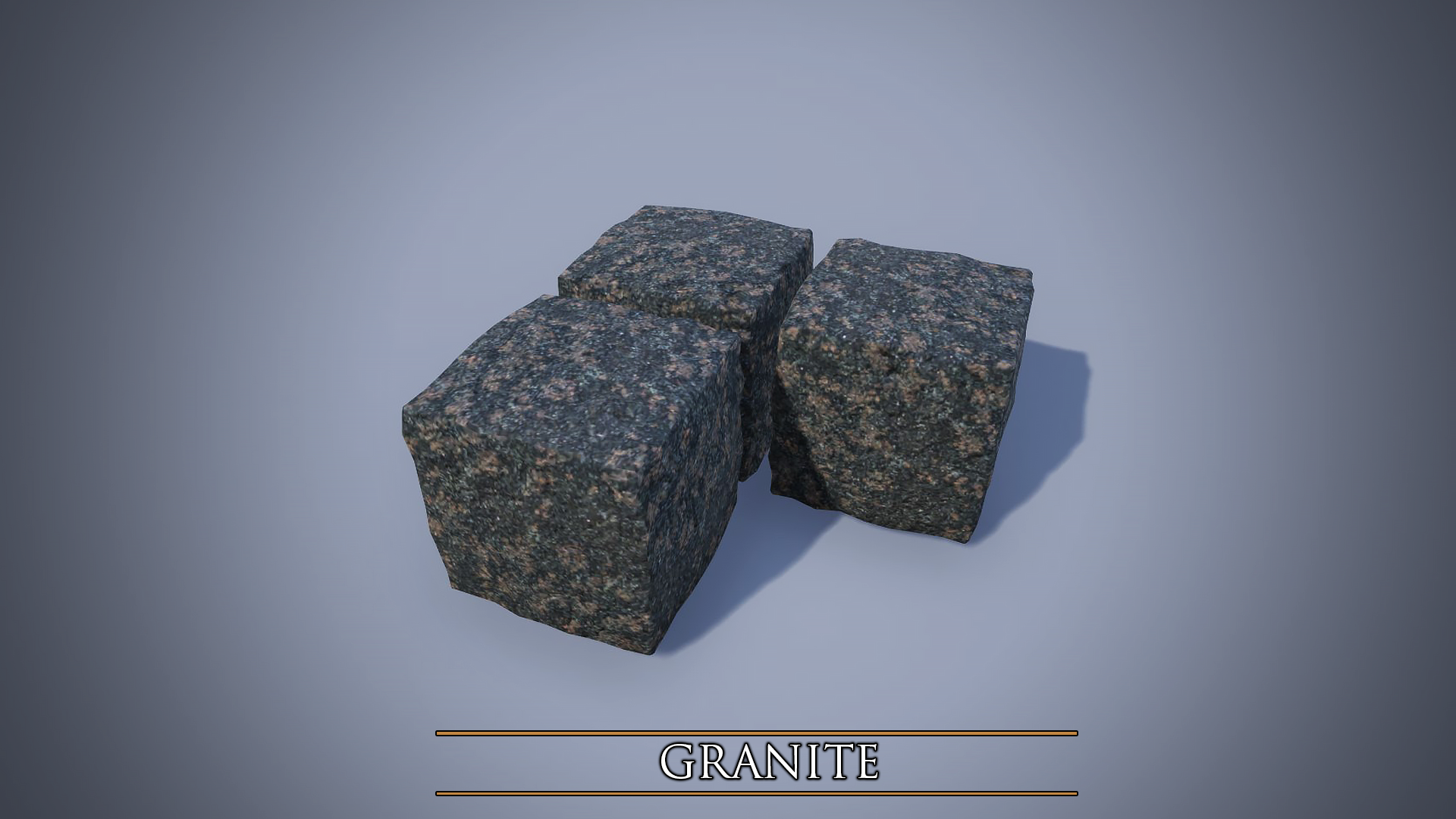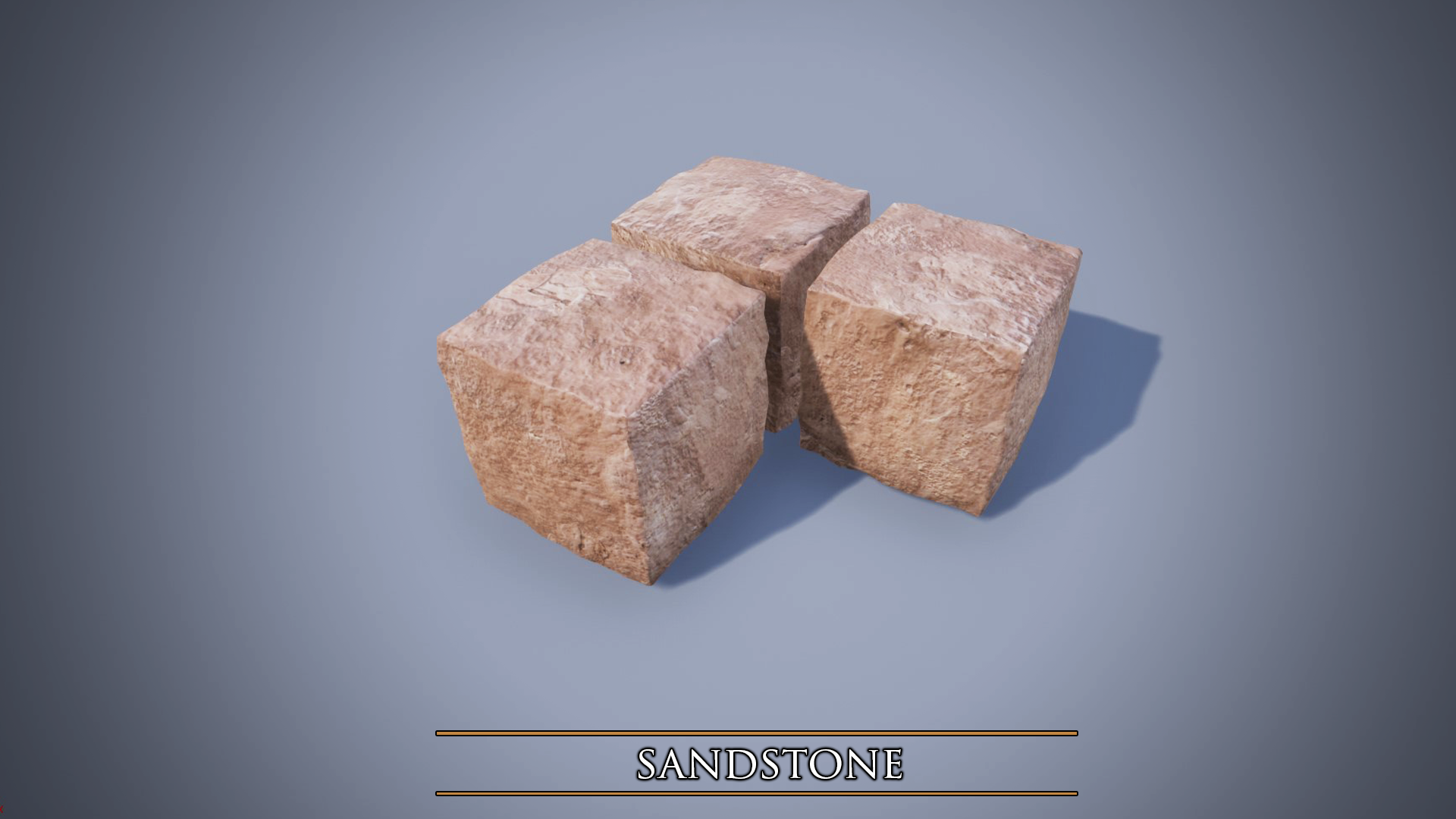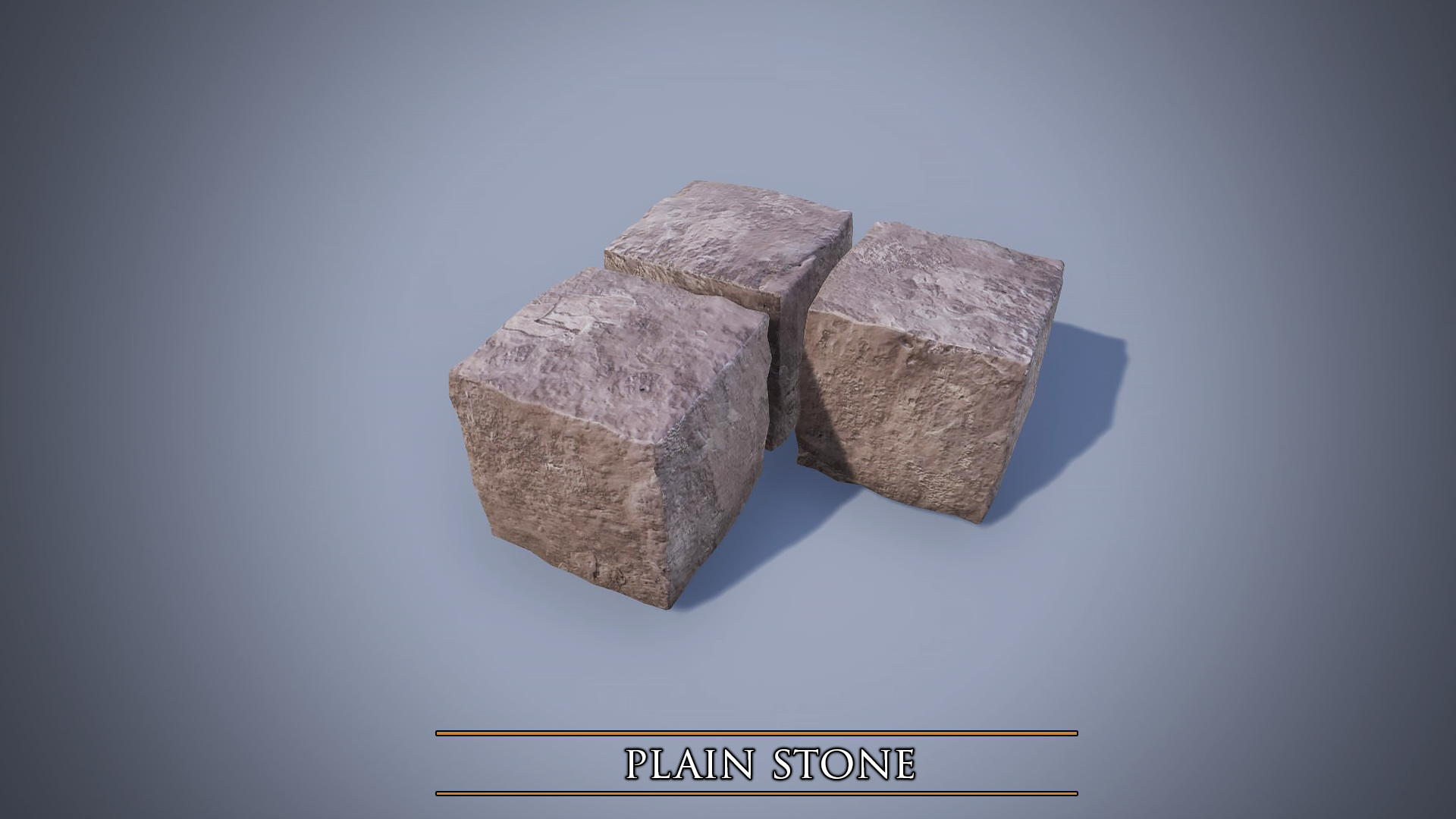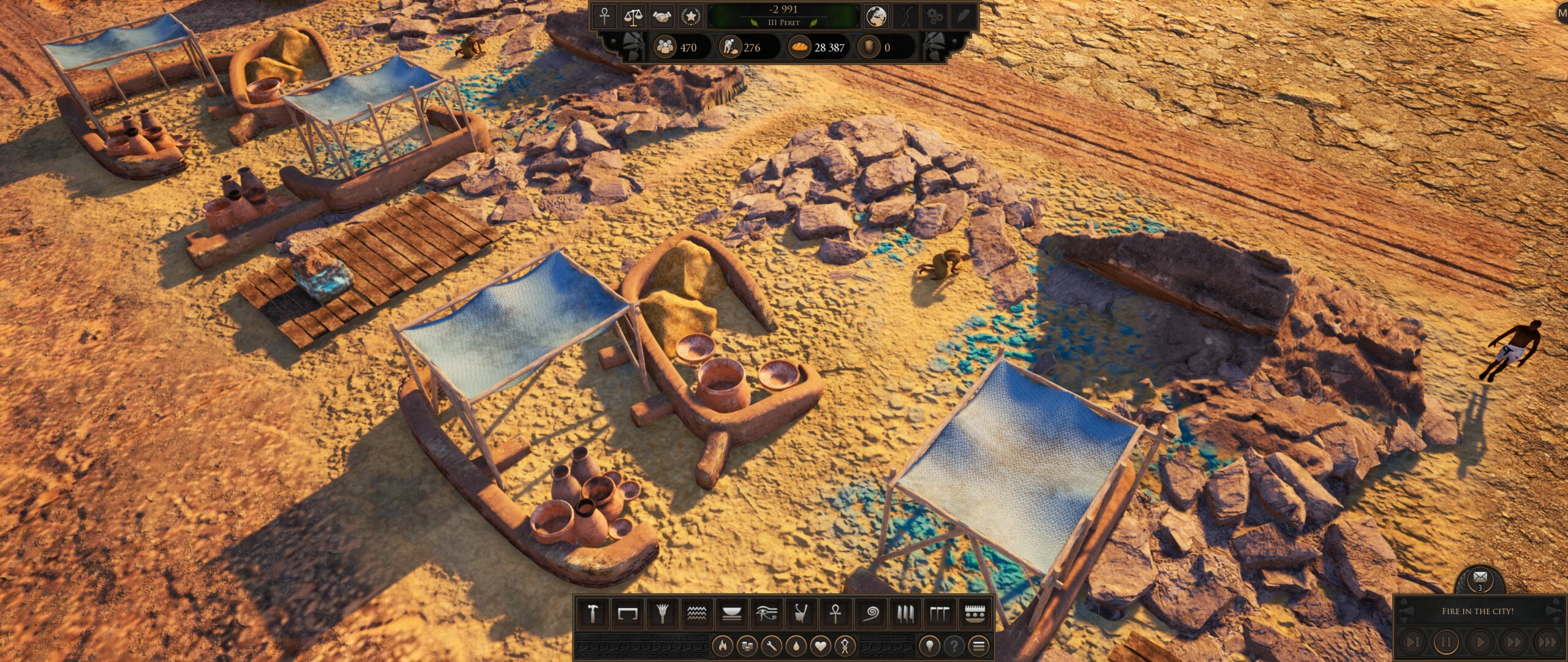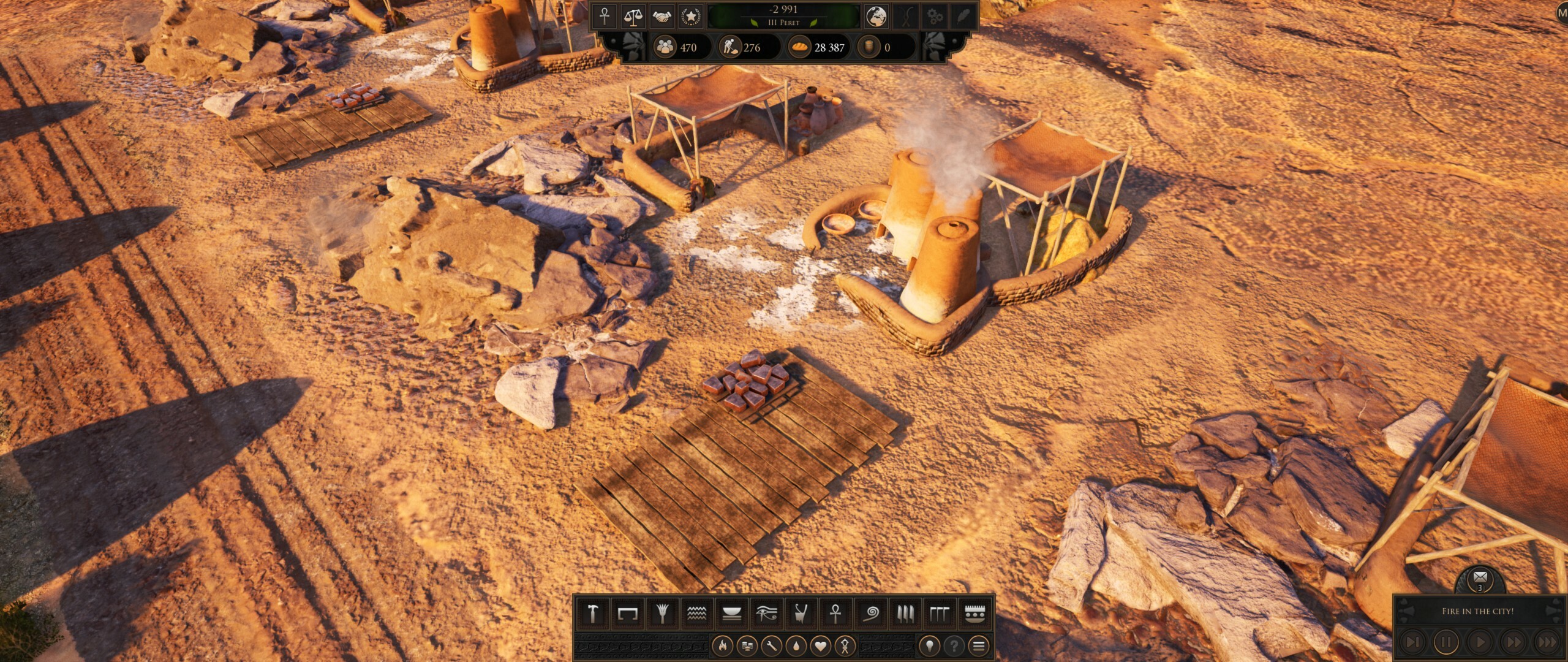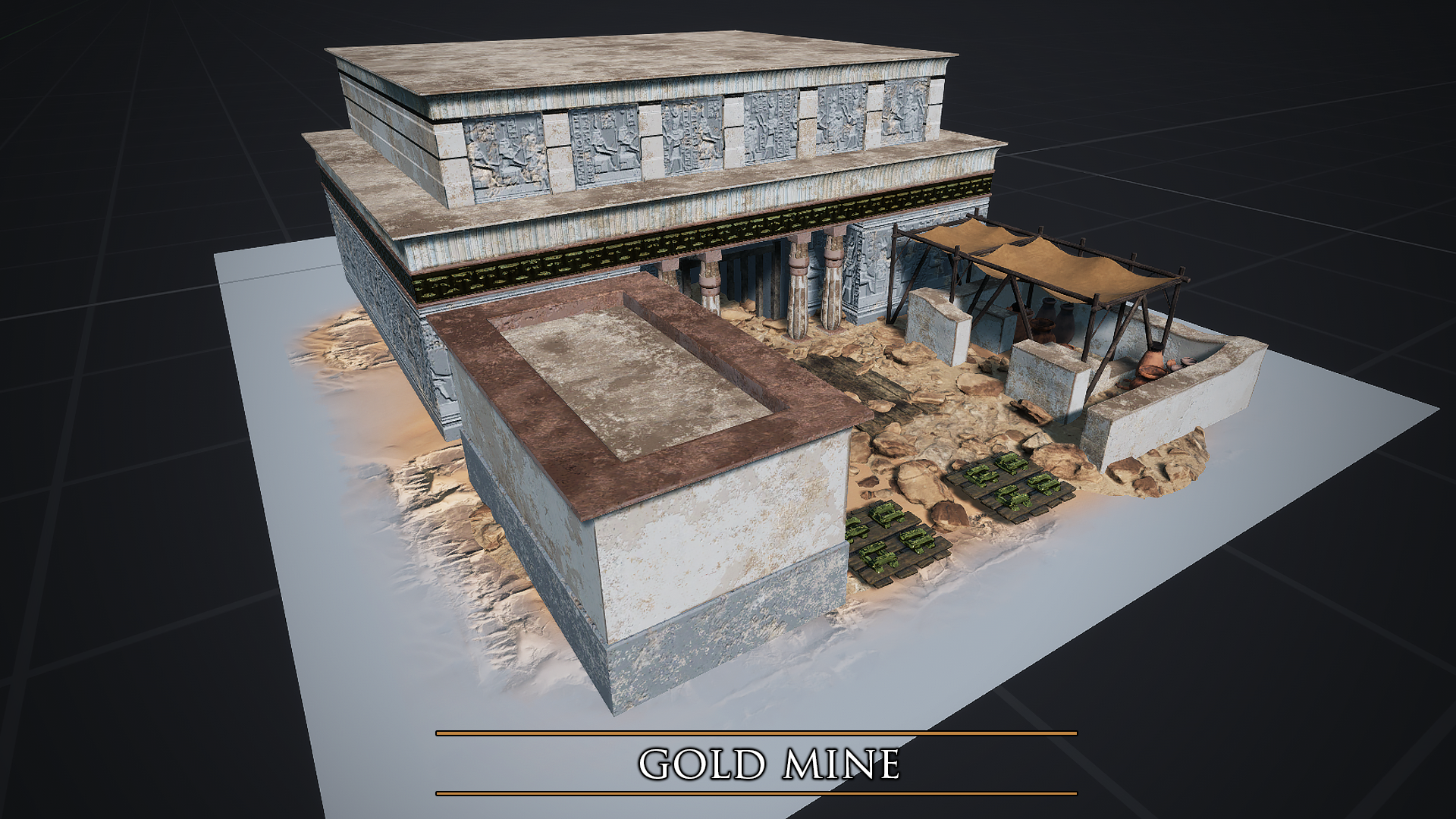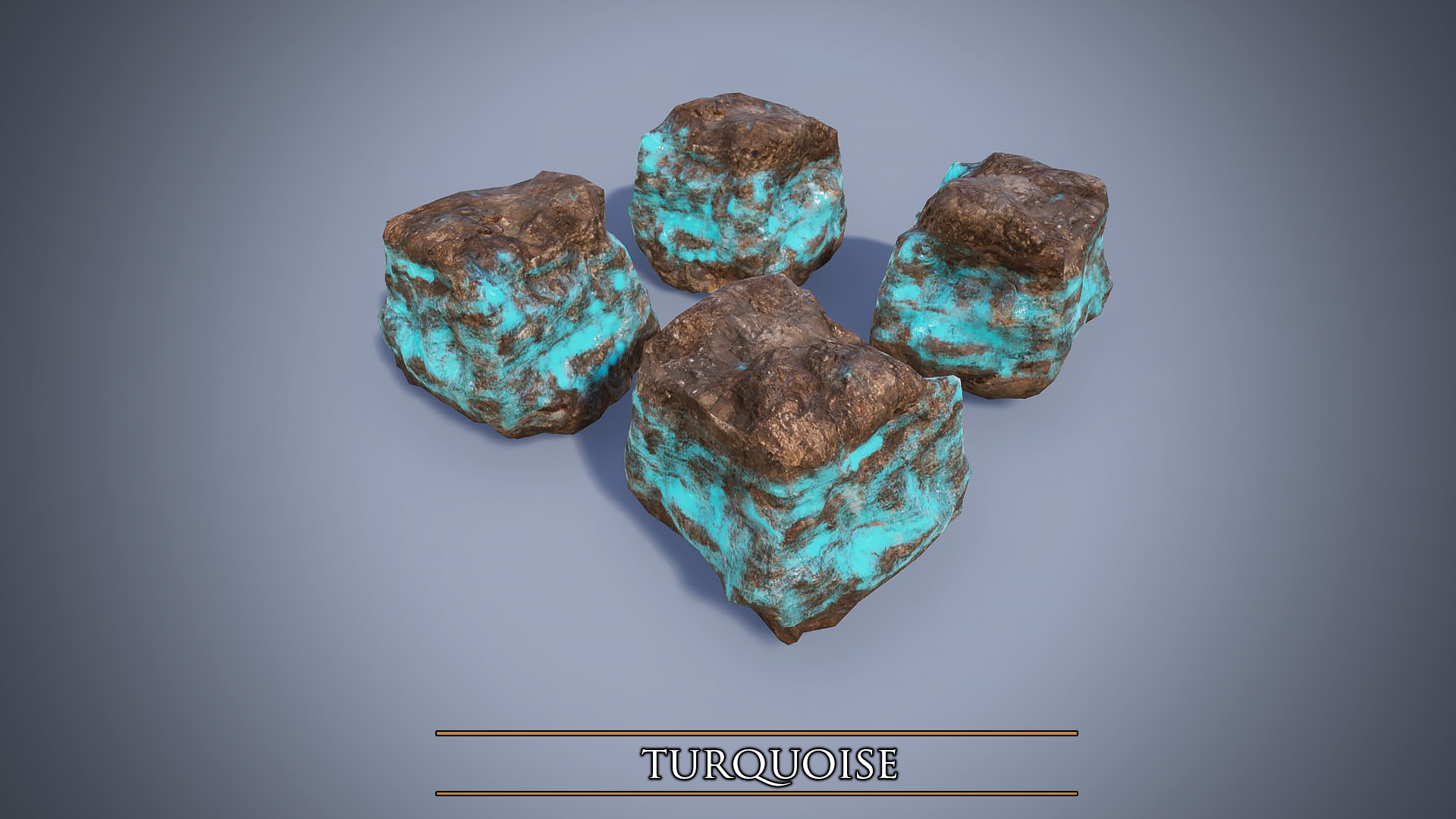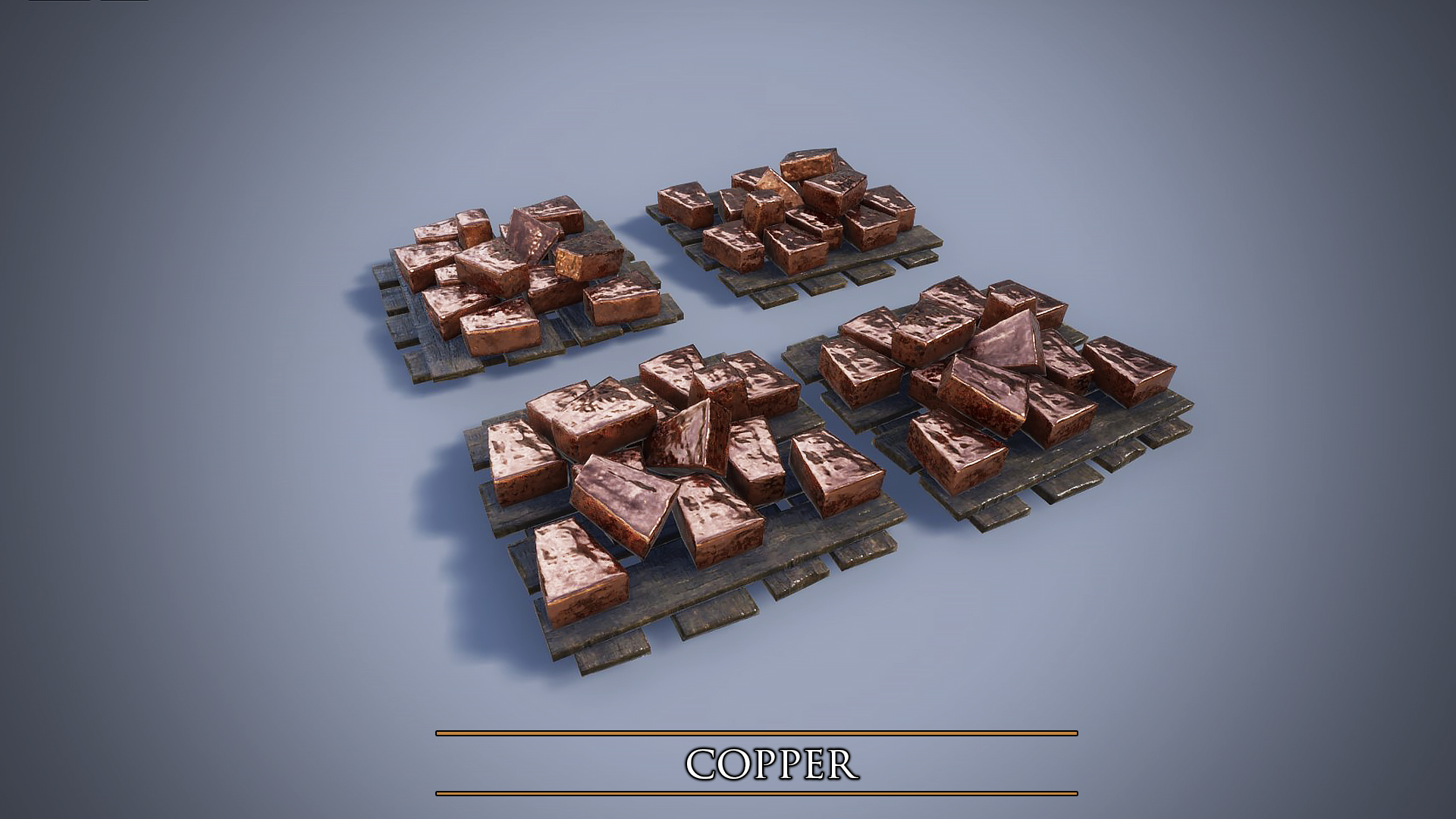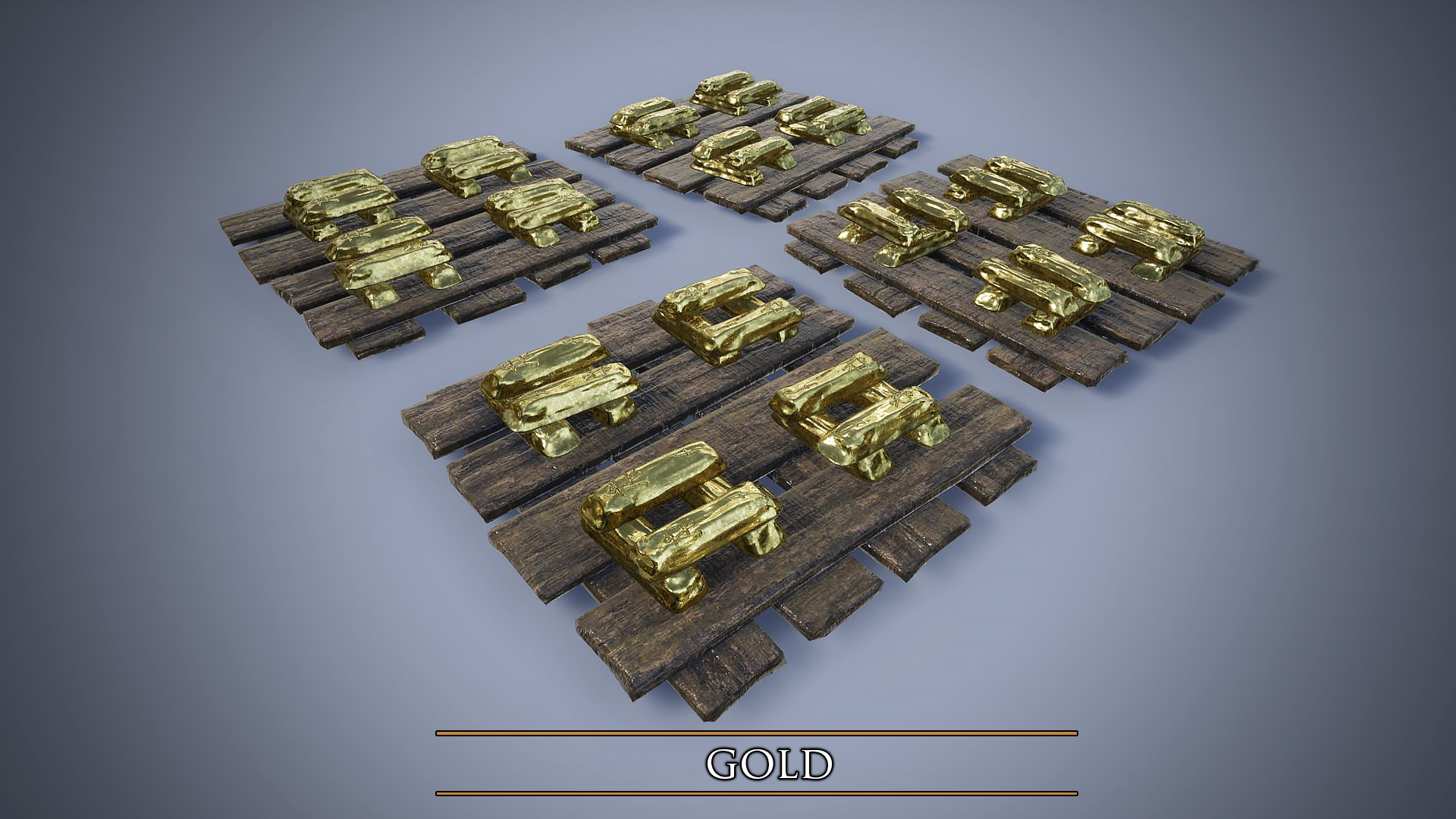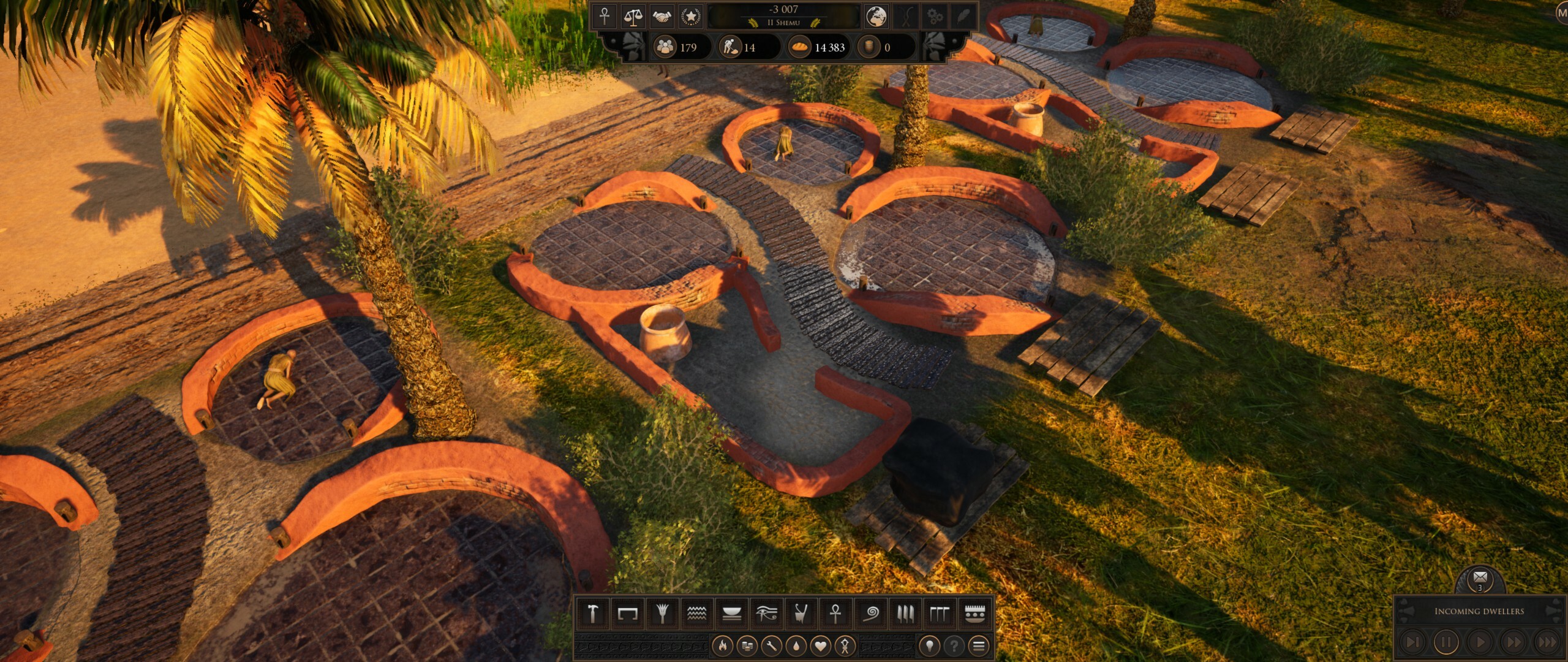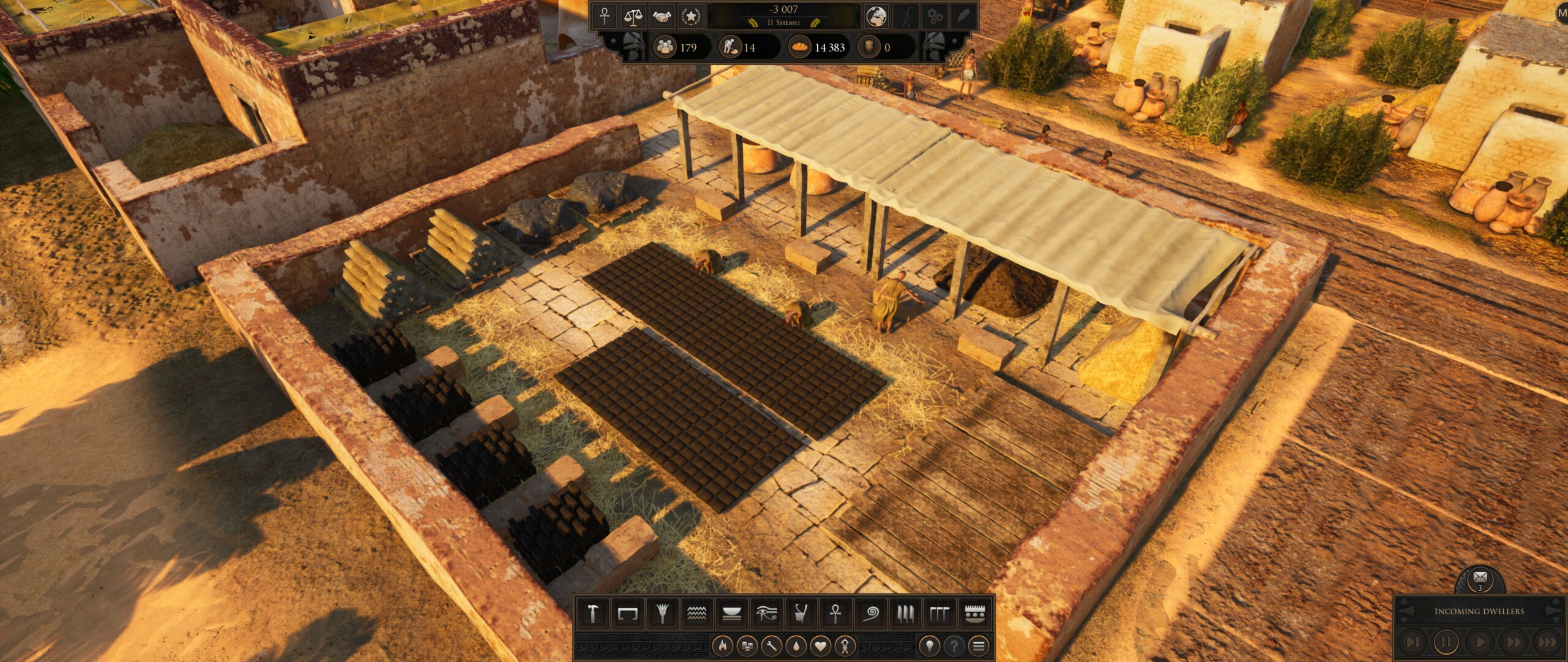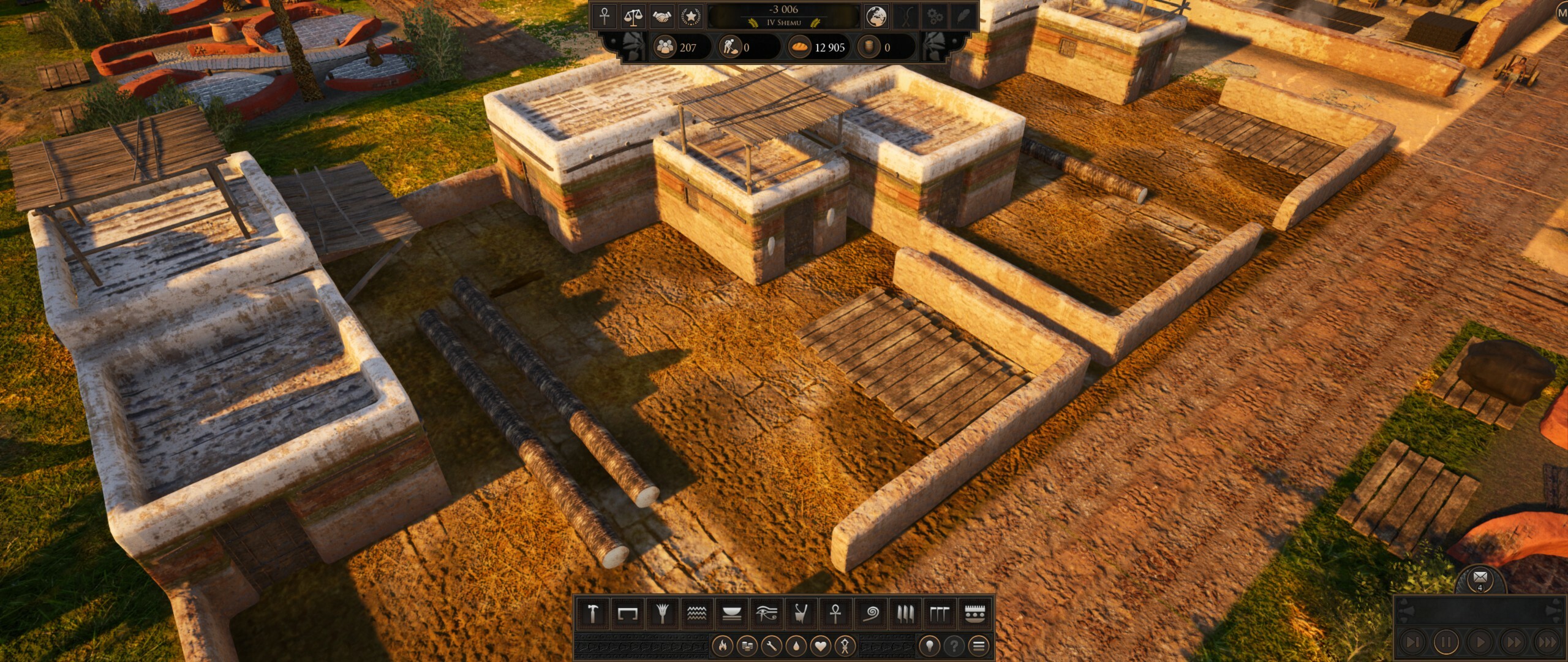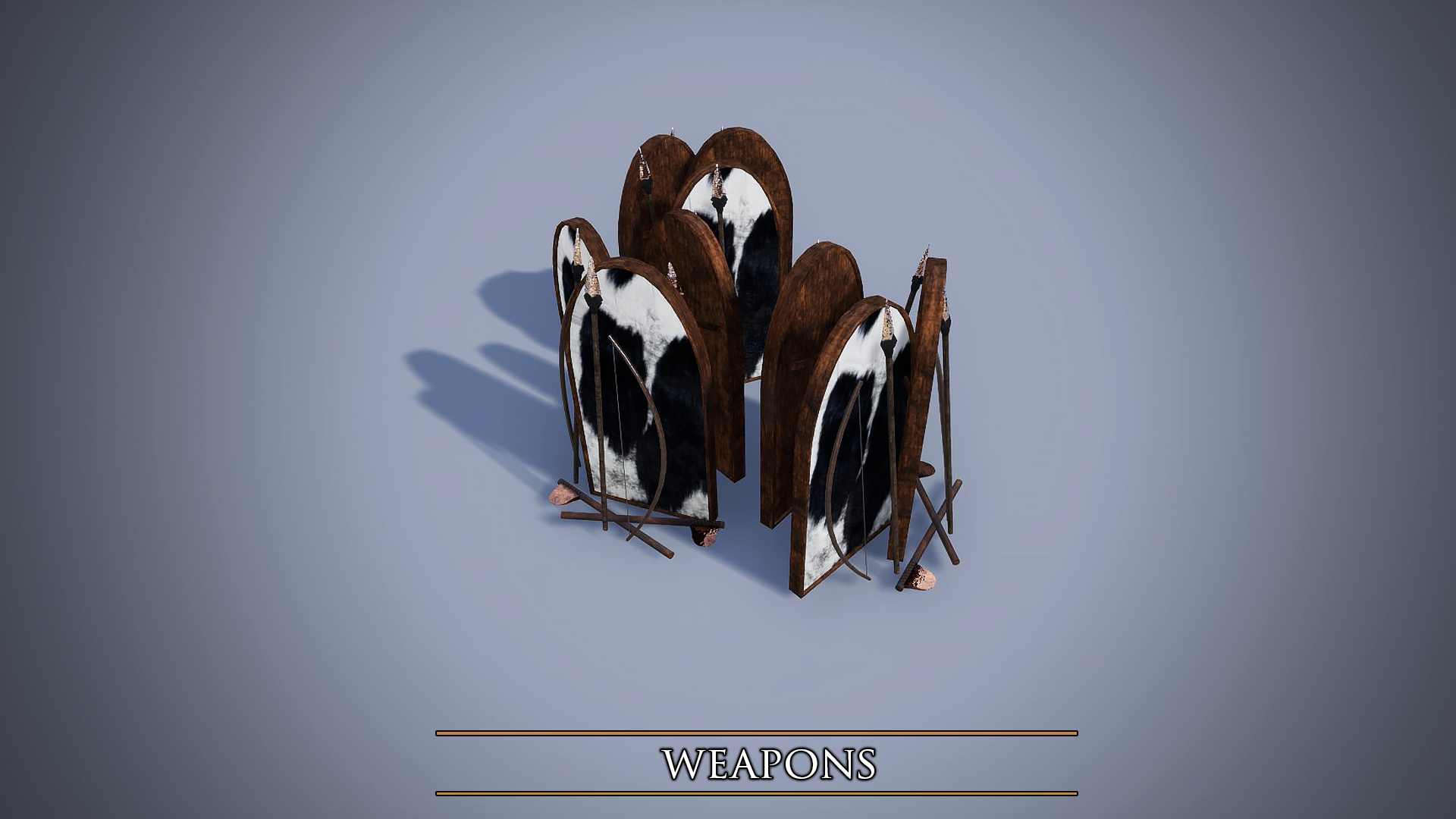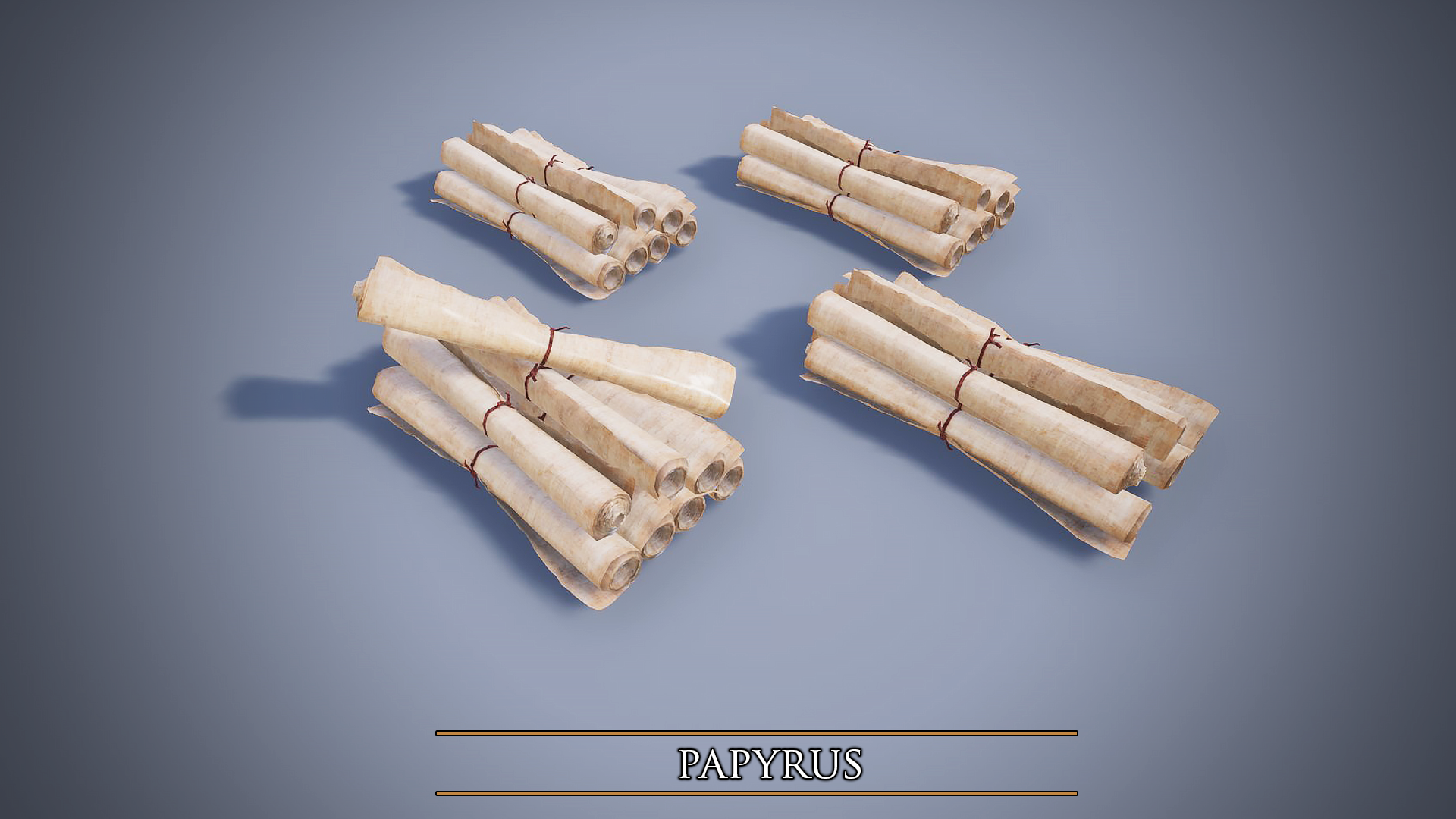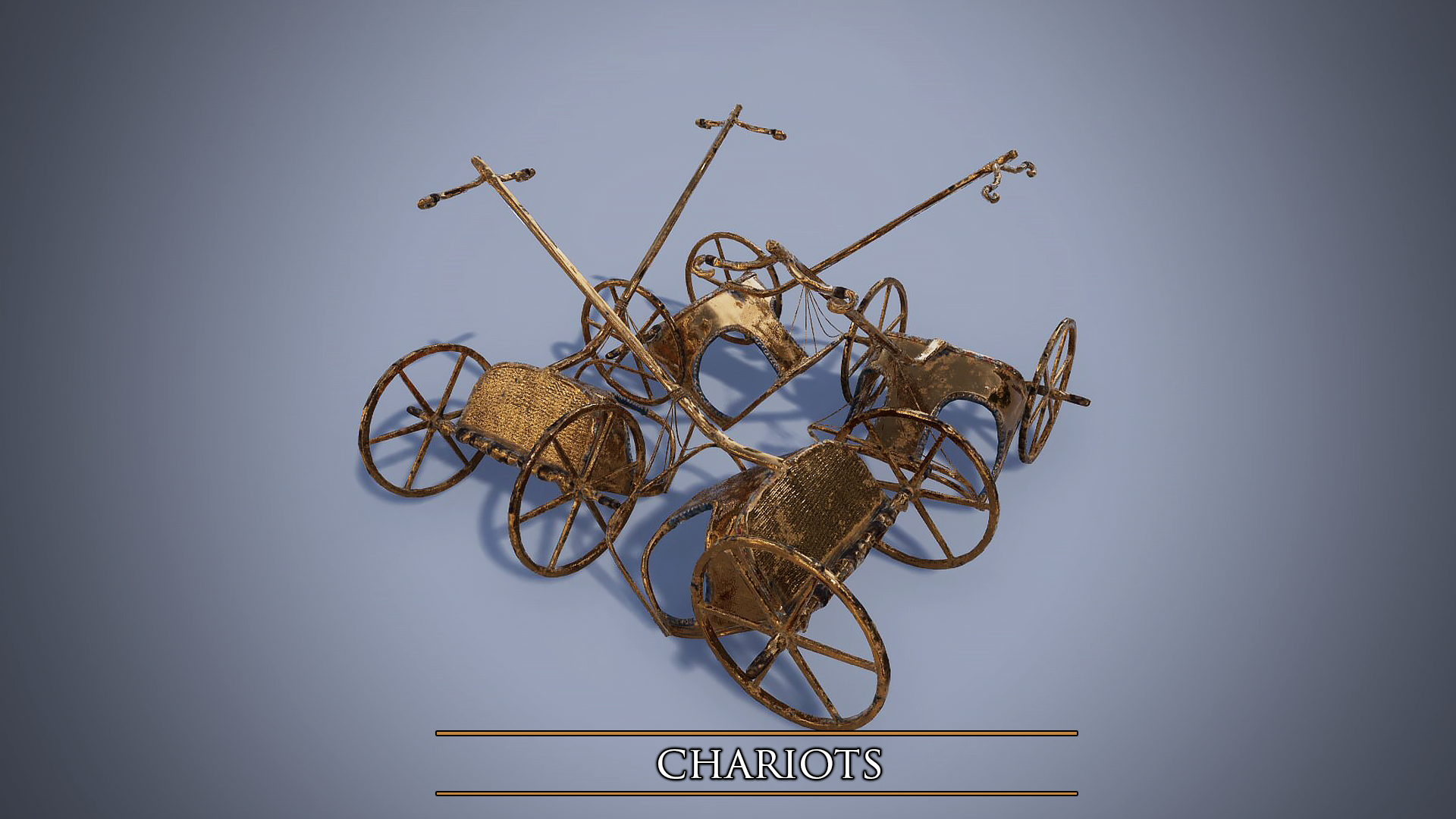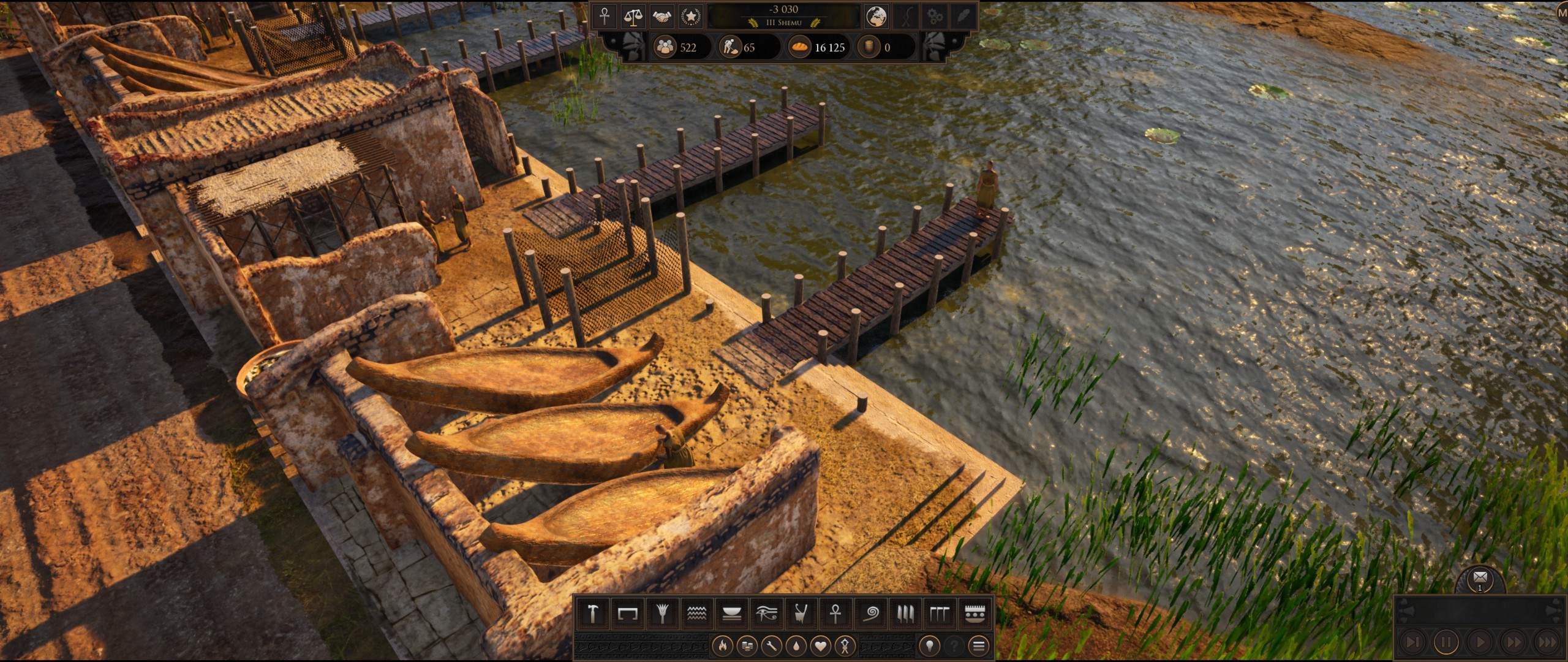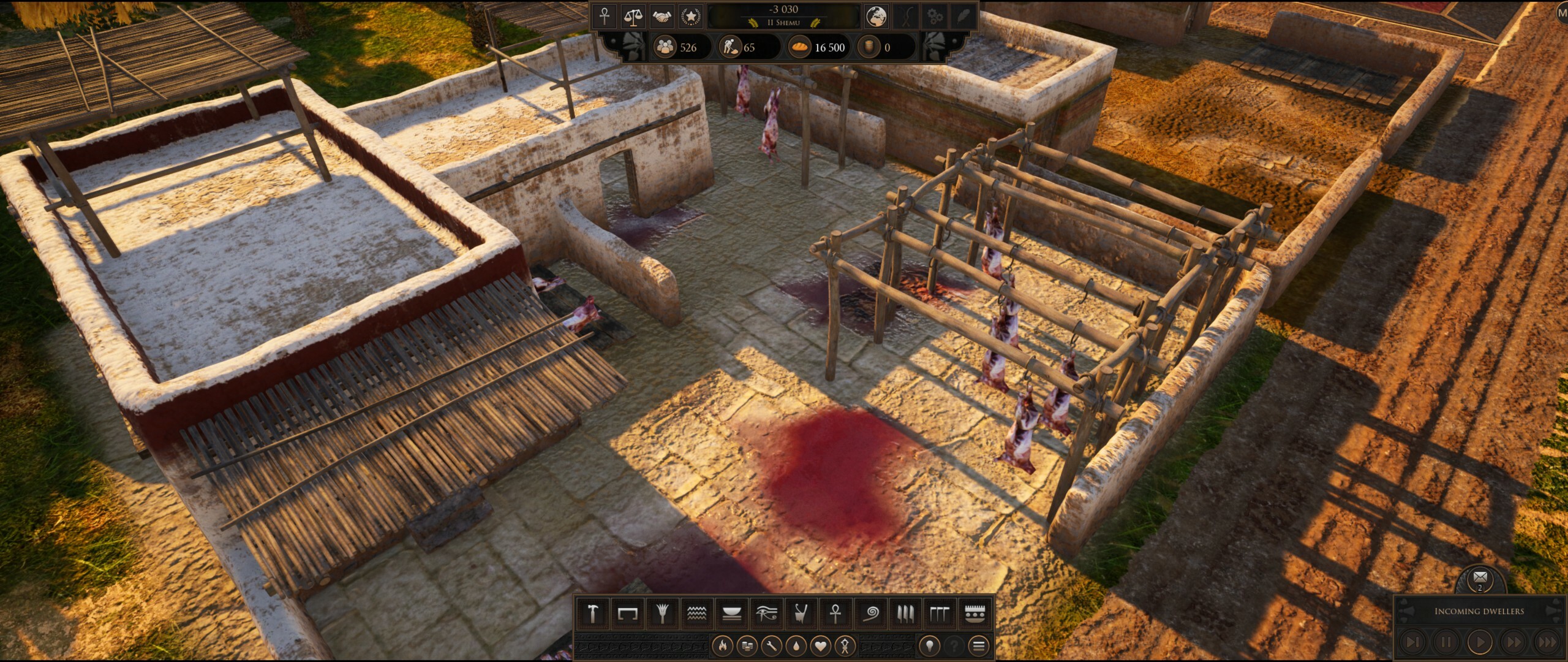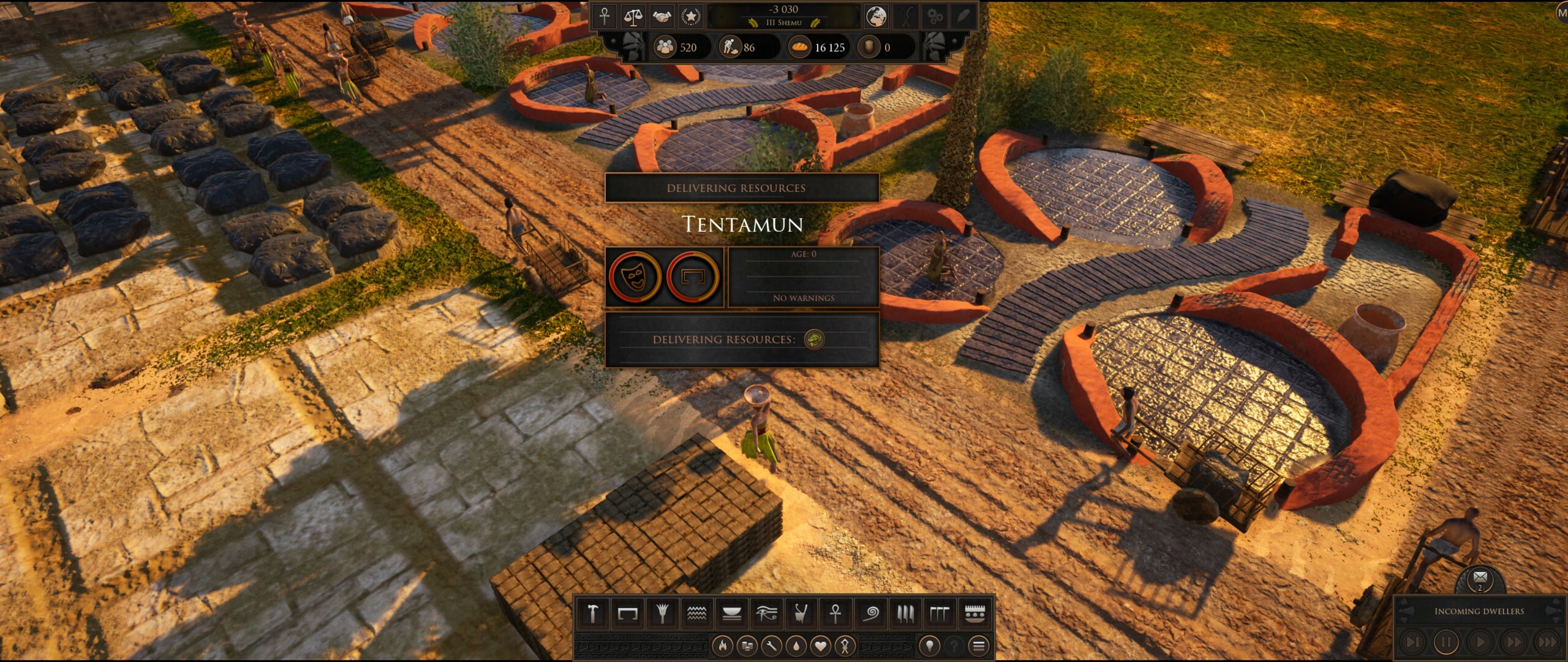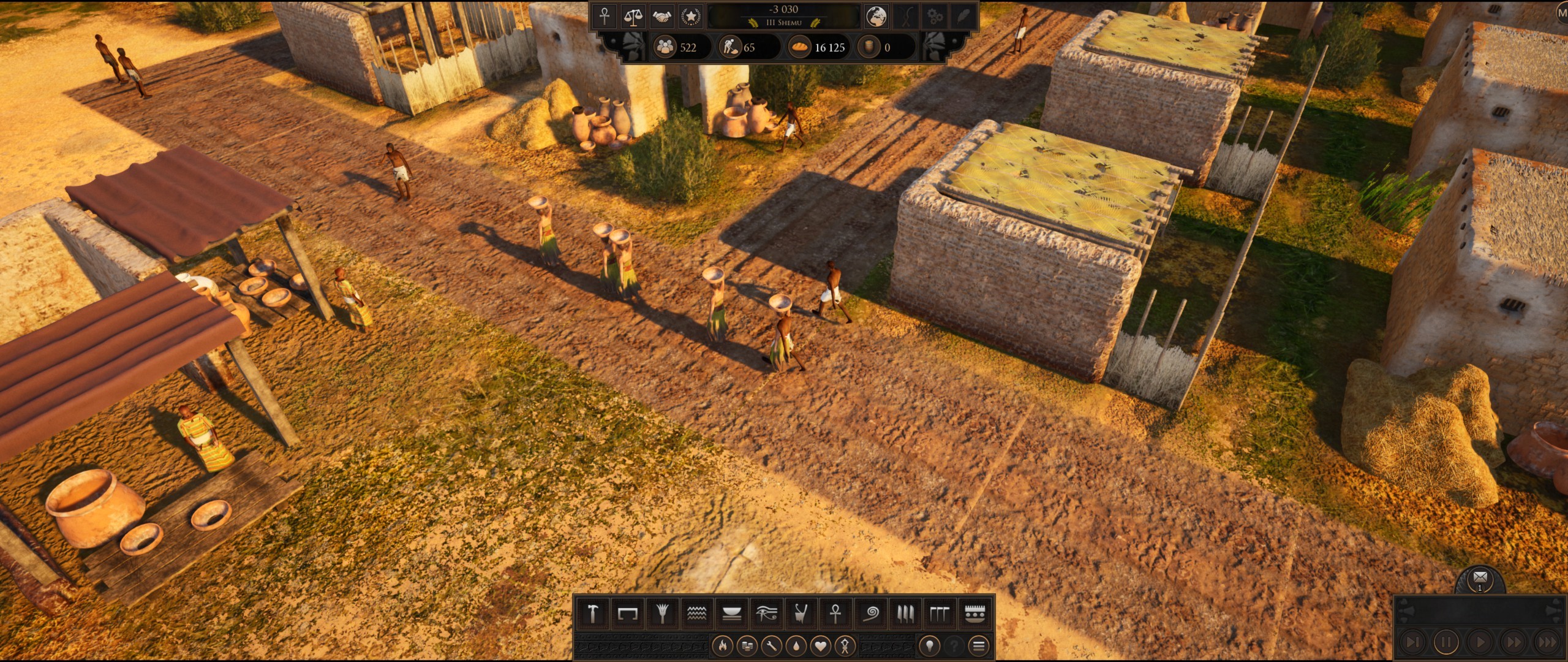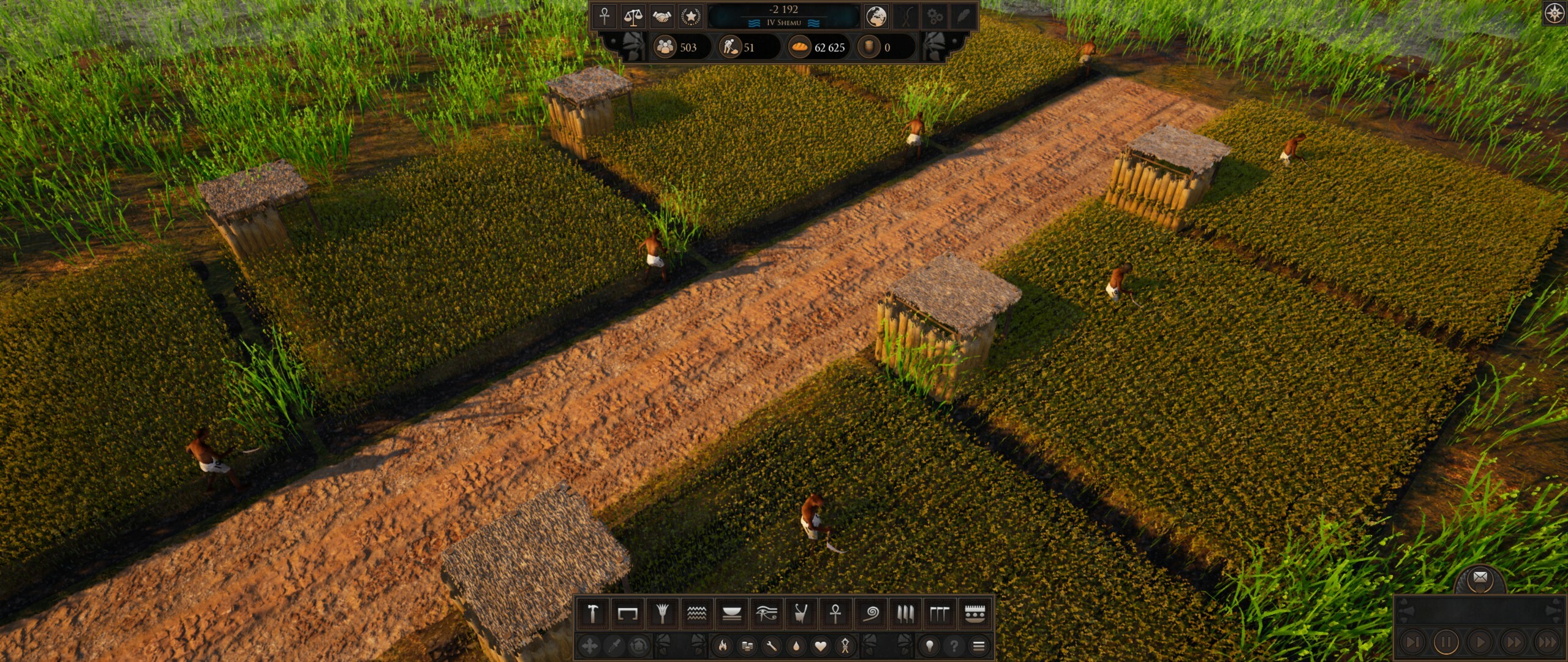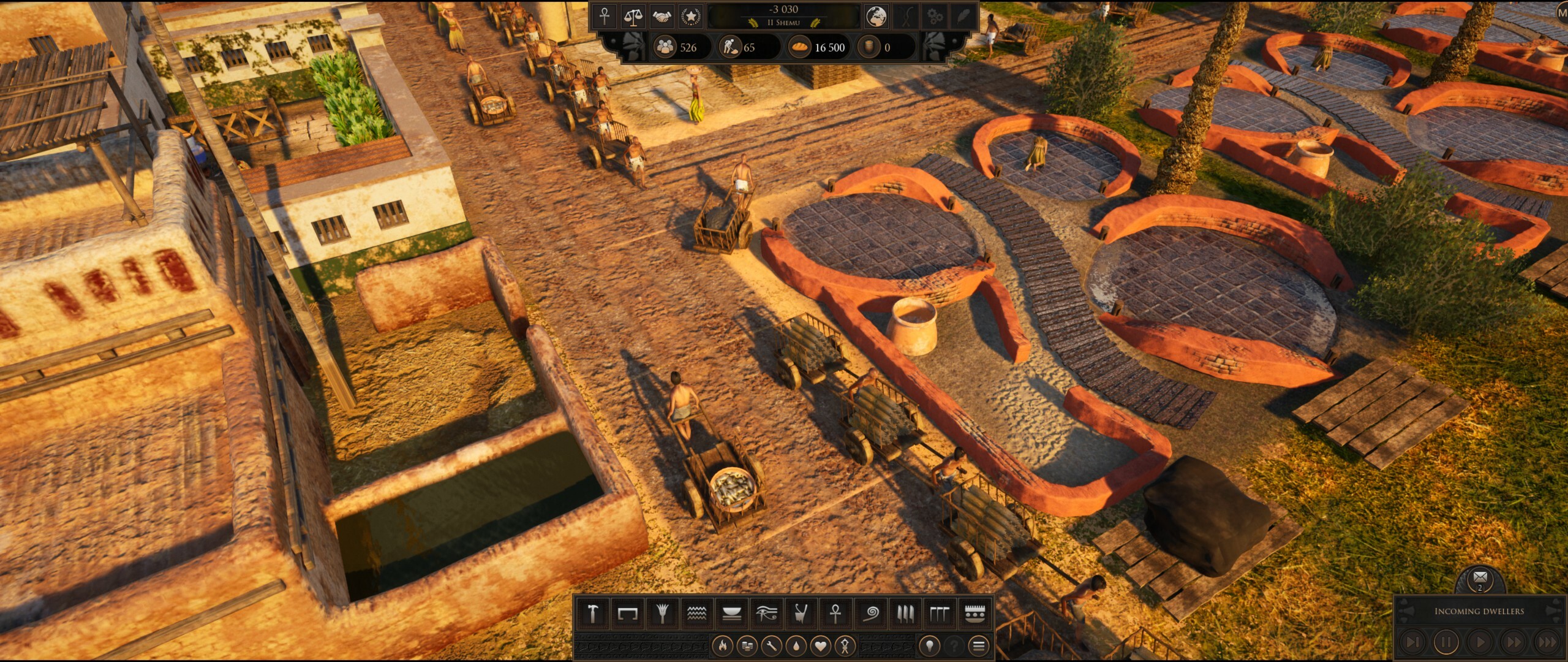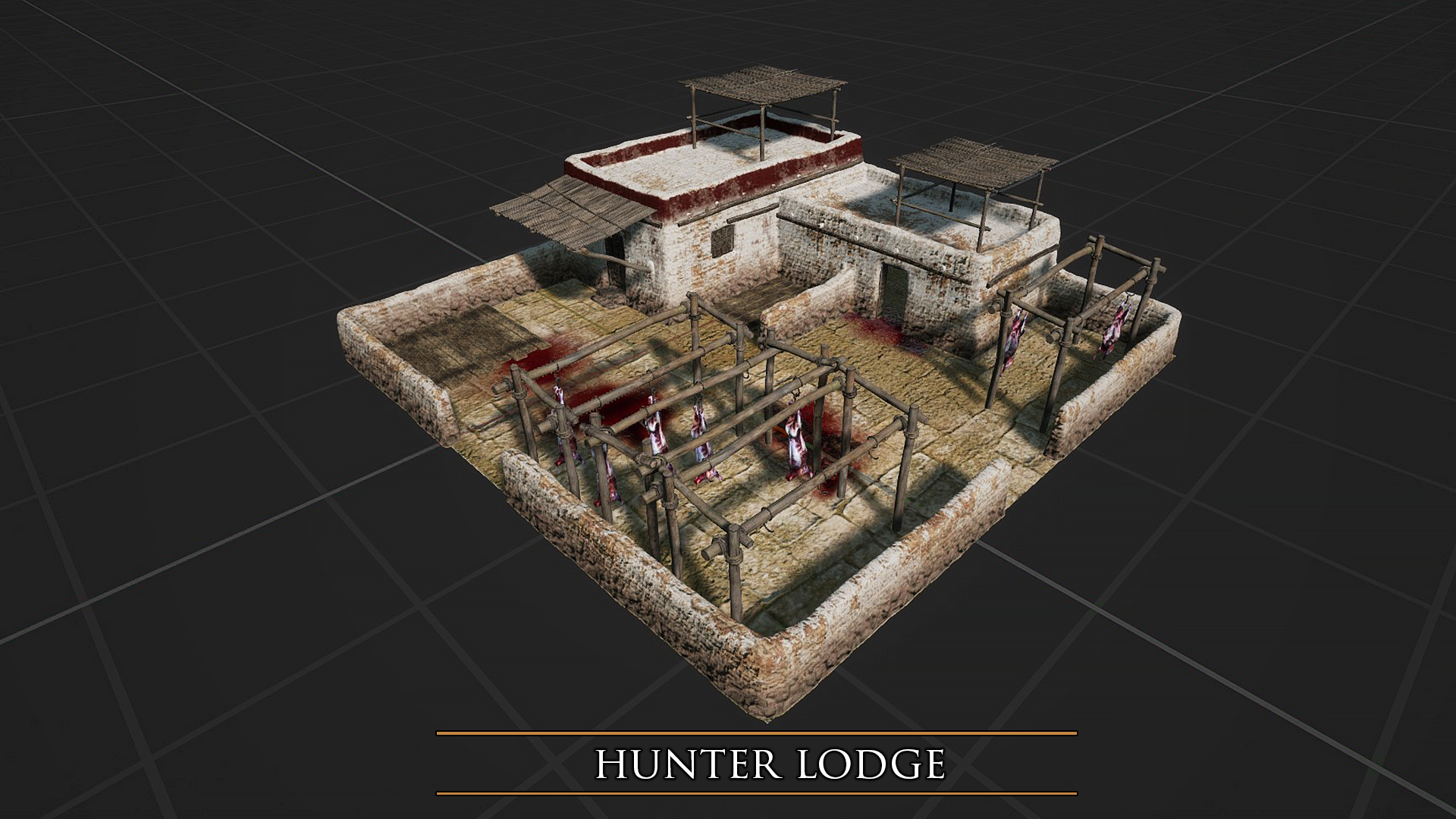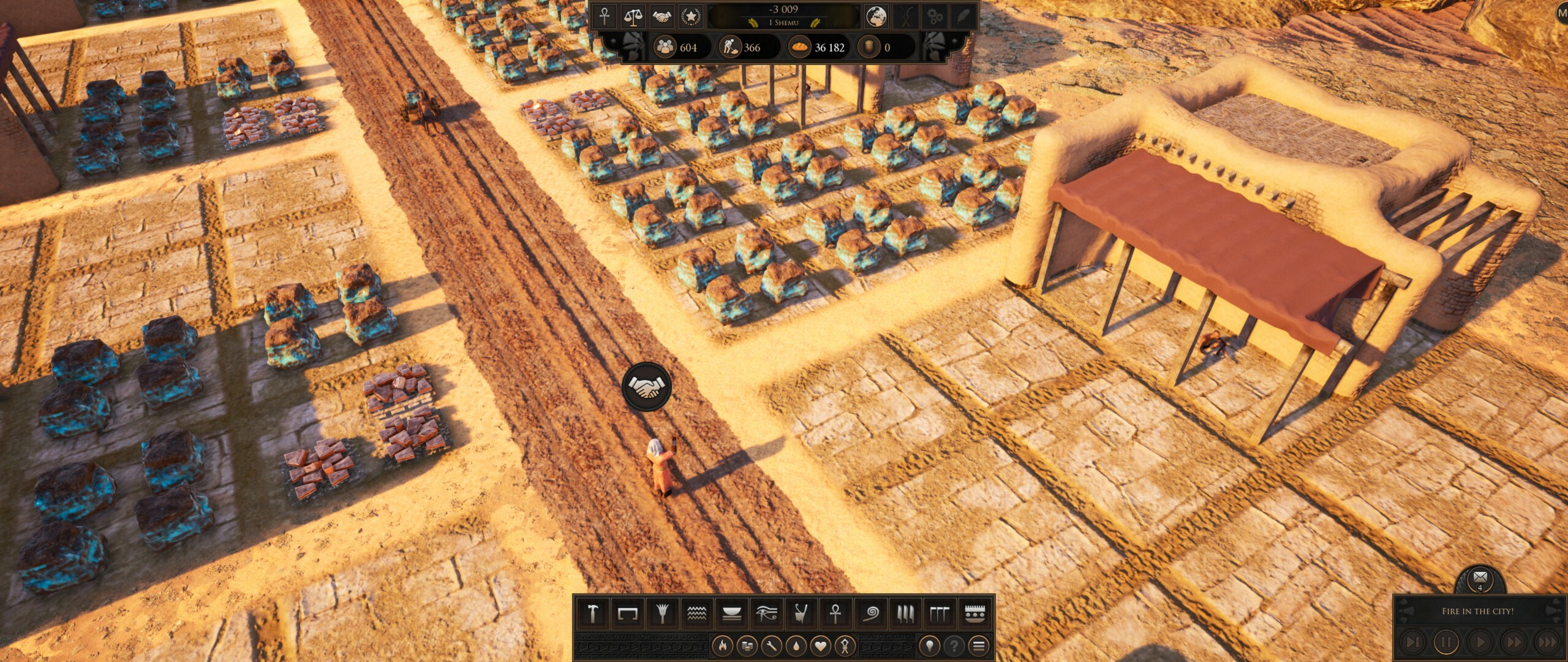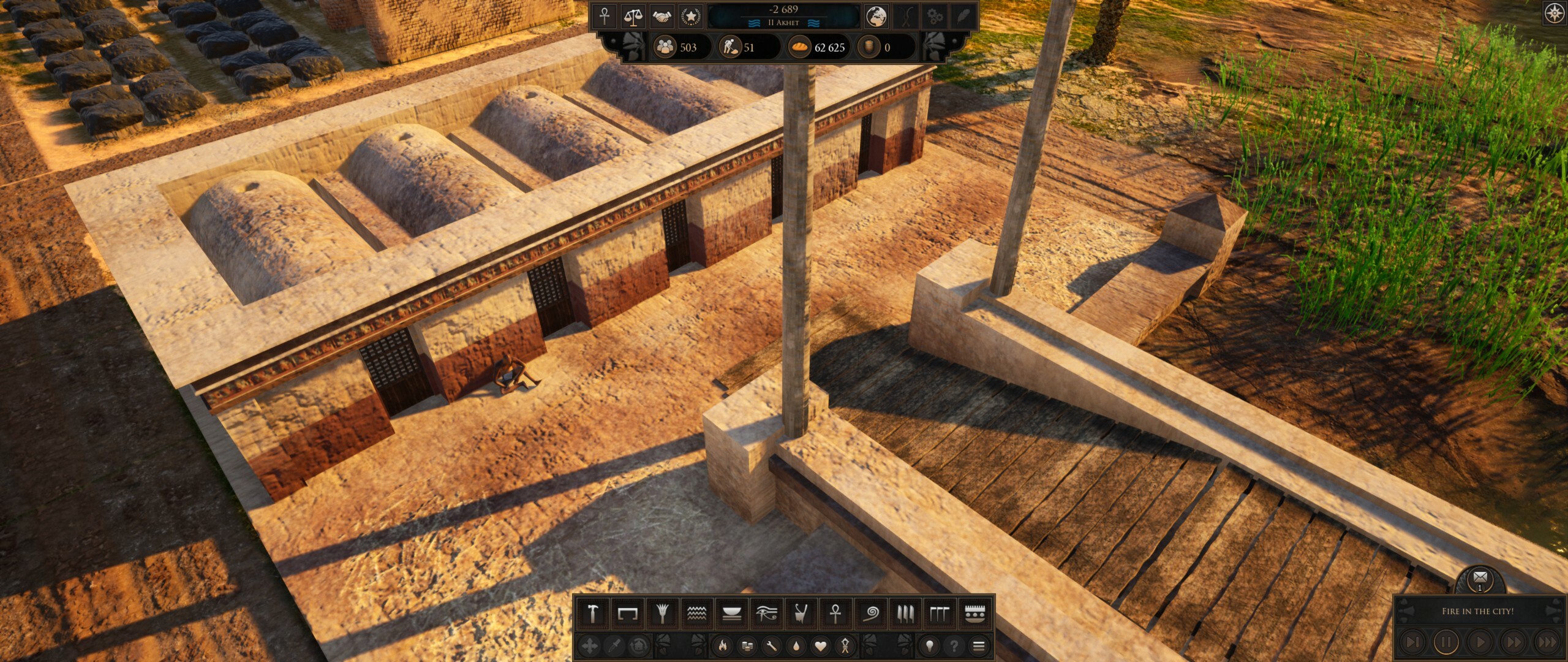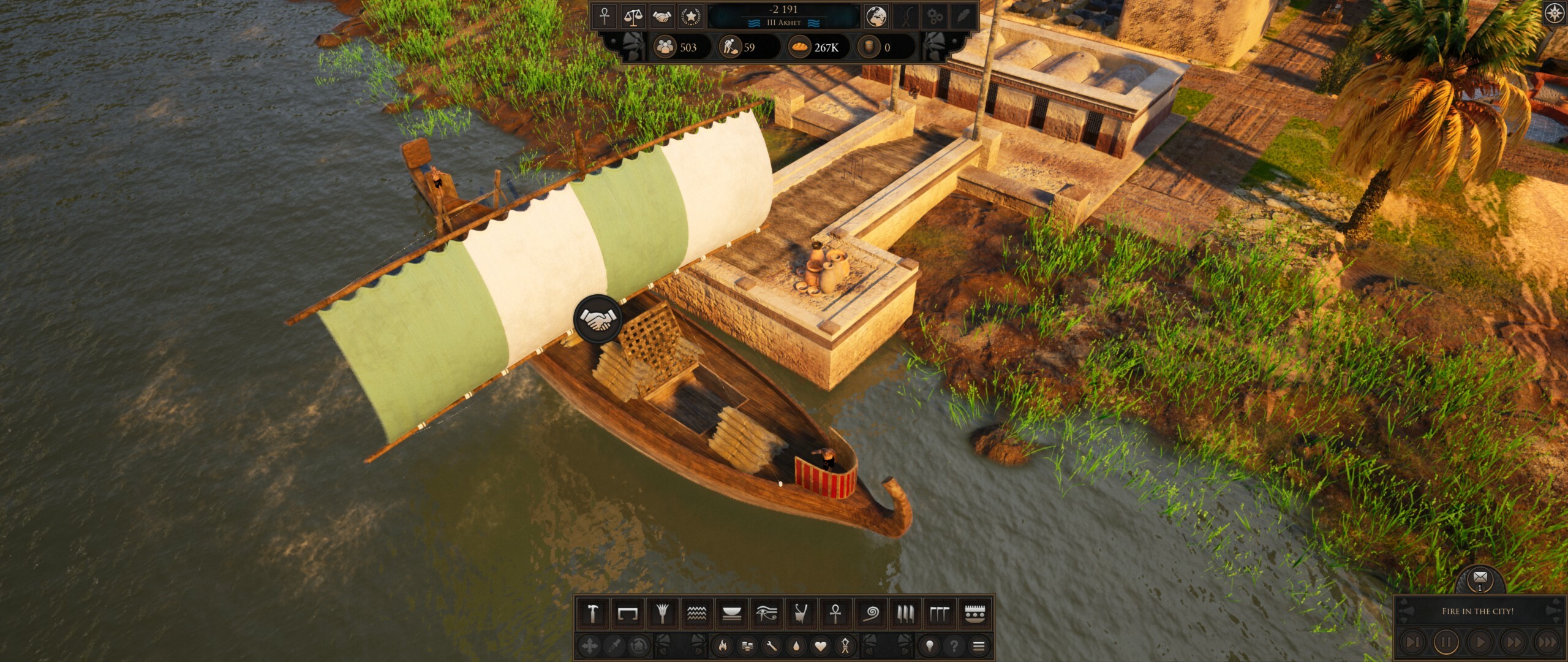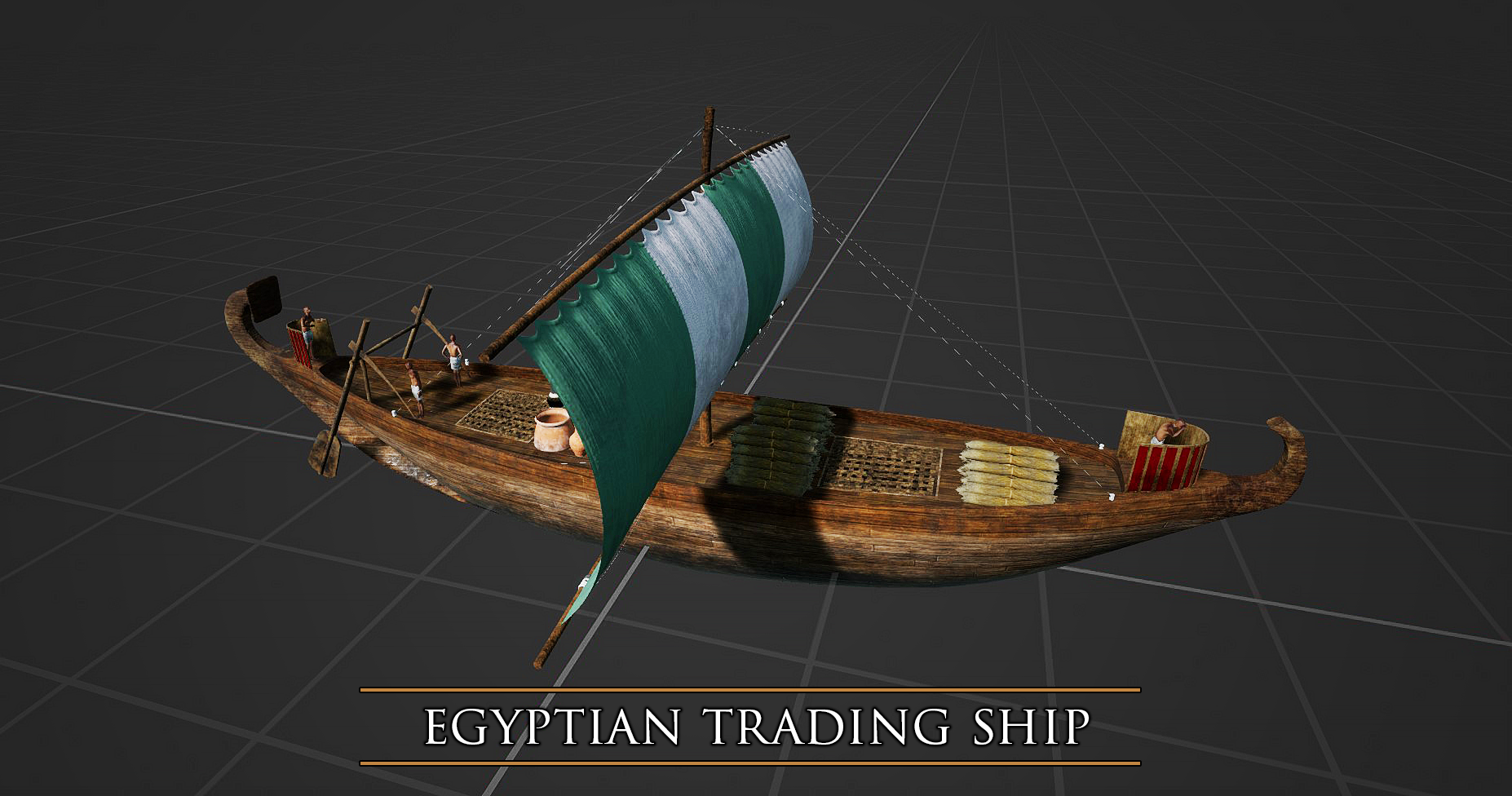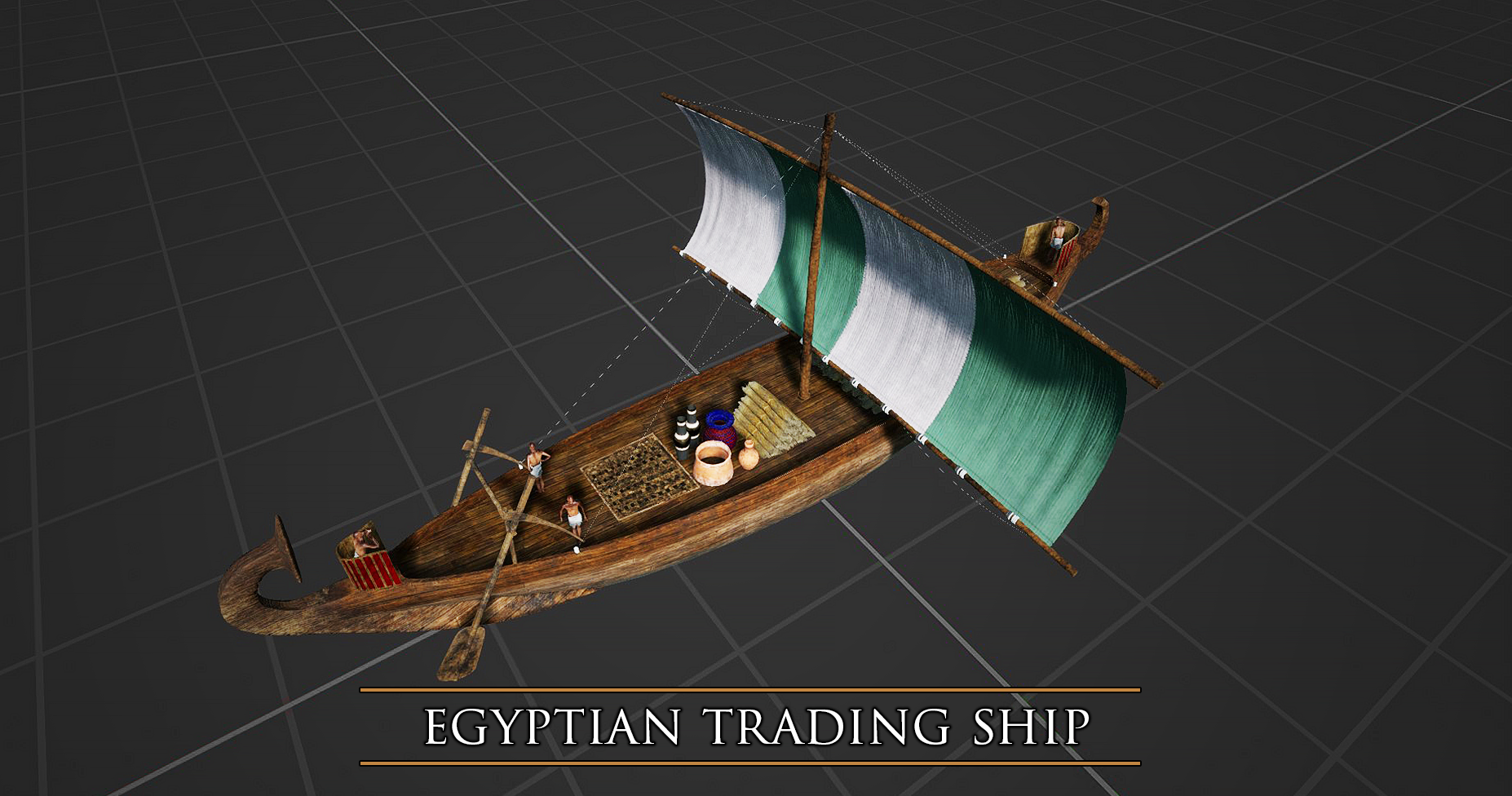
Dec 17, 2021
Builders of Egypt - eien no shikaku 永遠の刺客
The latest news from Ancient Egypt!
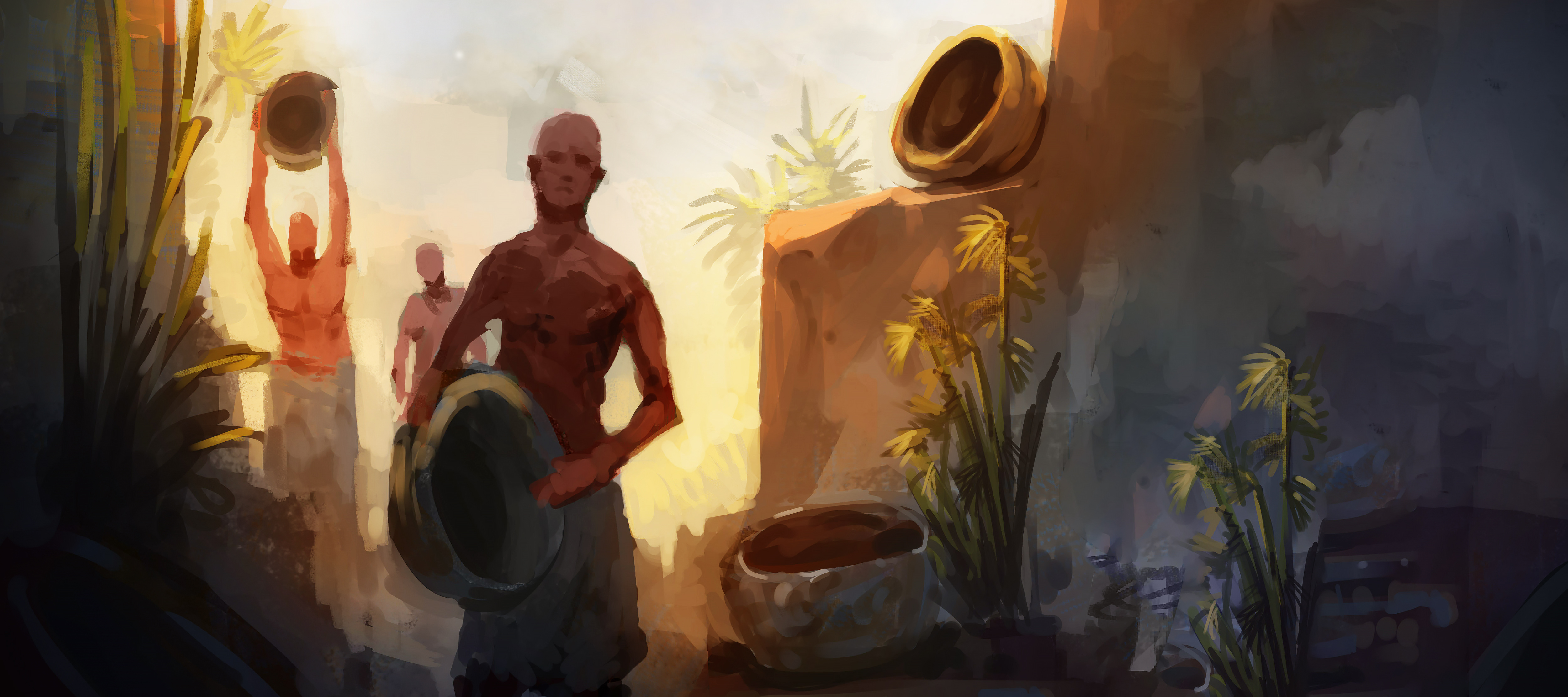
Dear All,
Welcome to our weekly Devblog! Today's topic is administrative buildings introduction # 2 so let's begin! This time we're going to share some light on the Tax Collector, Court and the Vizier's Palace.
Tax Collector and taxes in general
Taxes are collected by the tax collectors. The effectiveness of the collection depends on the distance between the Tax Collector and the housing, which also means that the tax collectors should be placed strategically and in the same manner as the Fire Stations mentioned last week (building's radius is crucial).
The player sets the tax rate on the residents' income. The reference point for the acceptance level is the average rate throughout Egypt set during the game (which might change while playing). Management based on very high taxes will eventually lead to people less likely staying in your city and having very low interest in settling if at all.

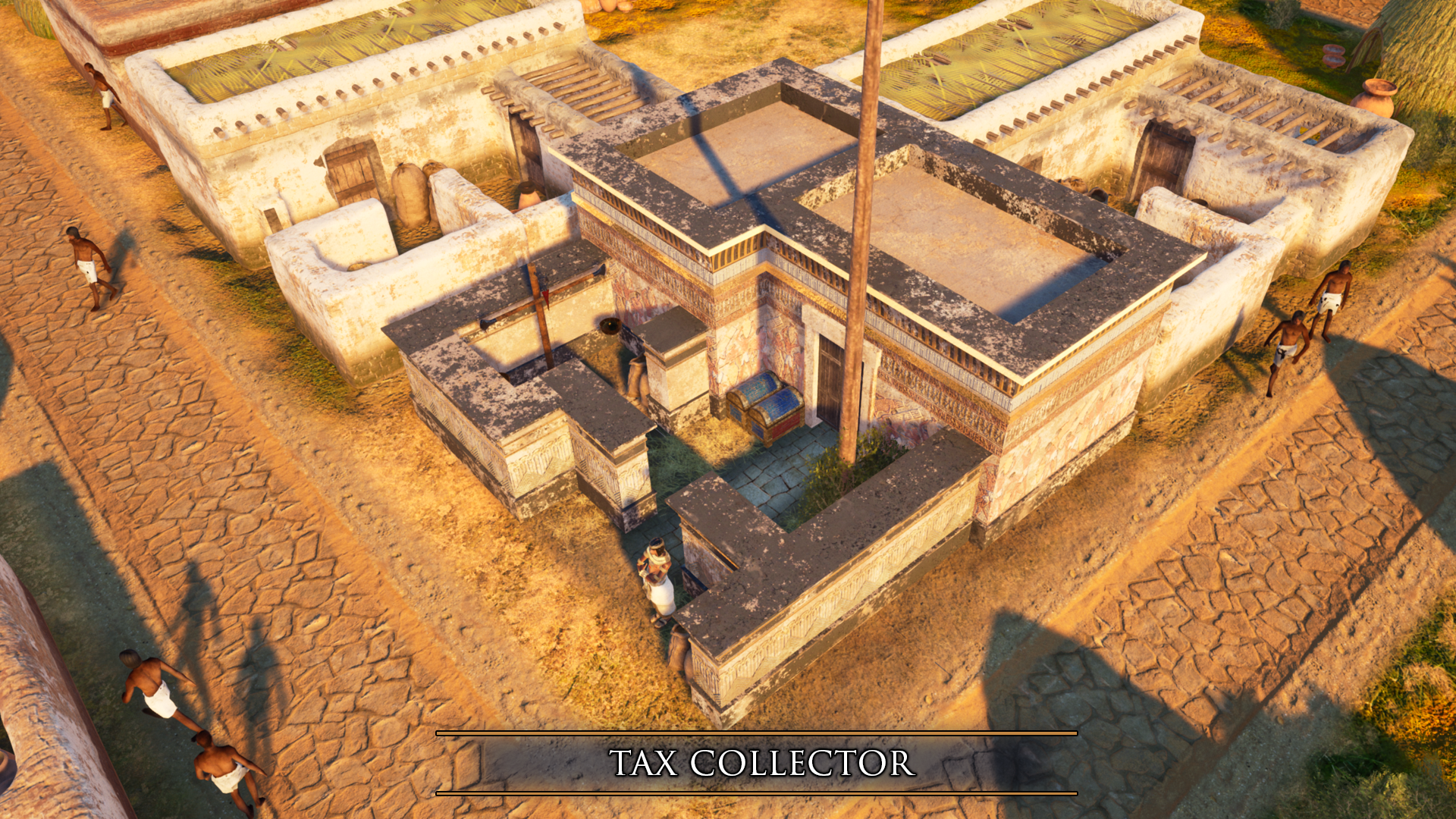
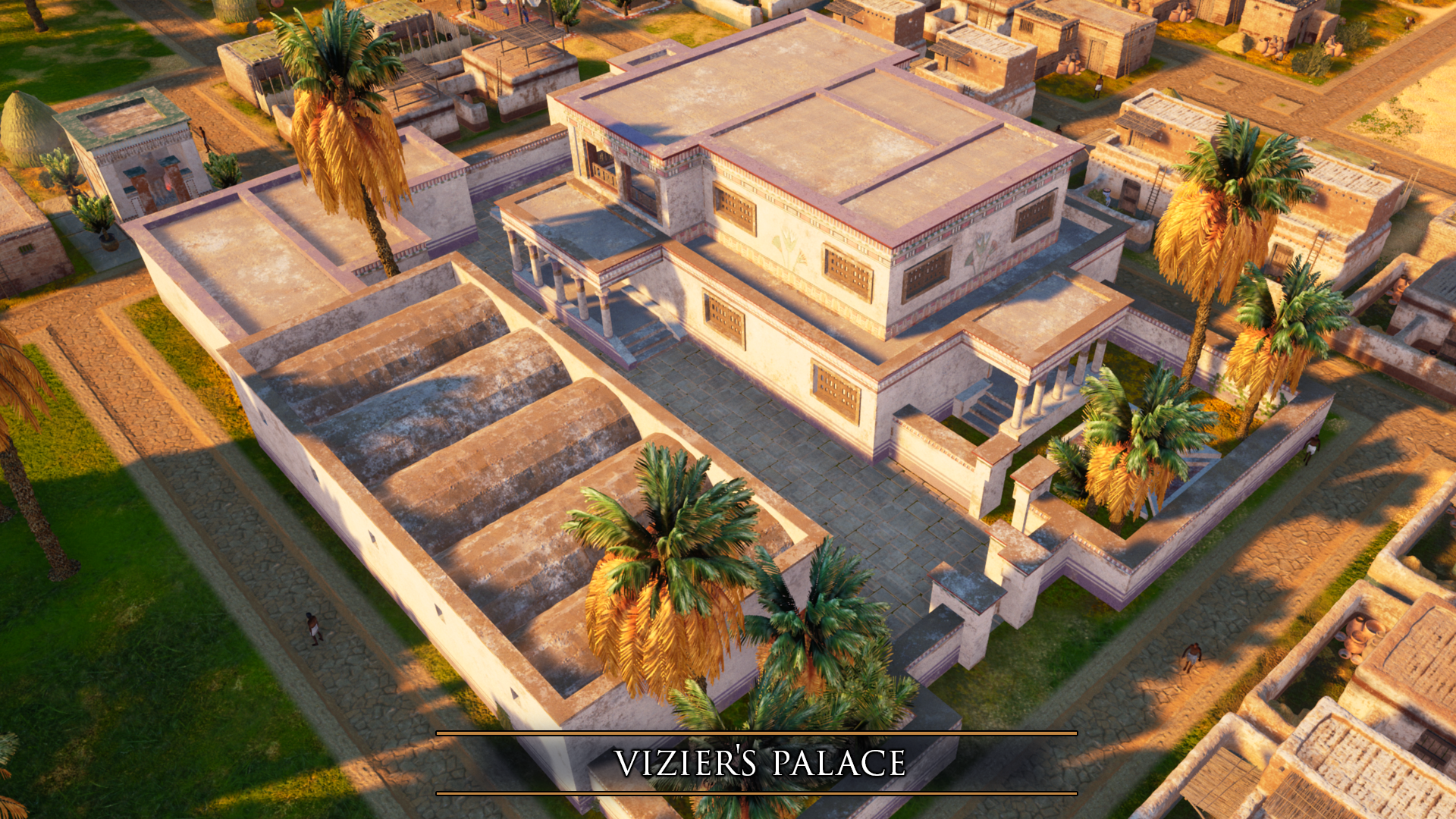
Court and Vizier's Palace
It's worth emphasizing that the Court significantly reduces crimes within its range and it's one of many requirements in upper-class housing needs (from 9th level to higher). Once you plan your hazards prevention structures don't forget to leave an additional place for the Court's final location, especially if your main goal is to create a well-organized prosperous community.
Vizier's Palace offers an additional interface for easier changes regarding settings such as taxation, player's wages, citizens' wages, and the most vital - a place to store surplus bread for Pharaoh's requests and other unforeseen events. It improves greatly the aesthetics of the locations where it's placed and the kingdom's attractiveness in general. It might be used for boosting rich districts areas with wealthy and demanding citizens who often require a certain level of desirability. The Palace will also be extremely important in the post-premiere DLCs along with the additional features which will be implemented later as a part of the long-term project engaging players.
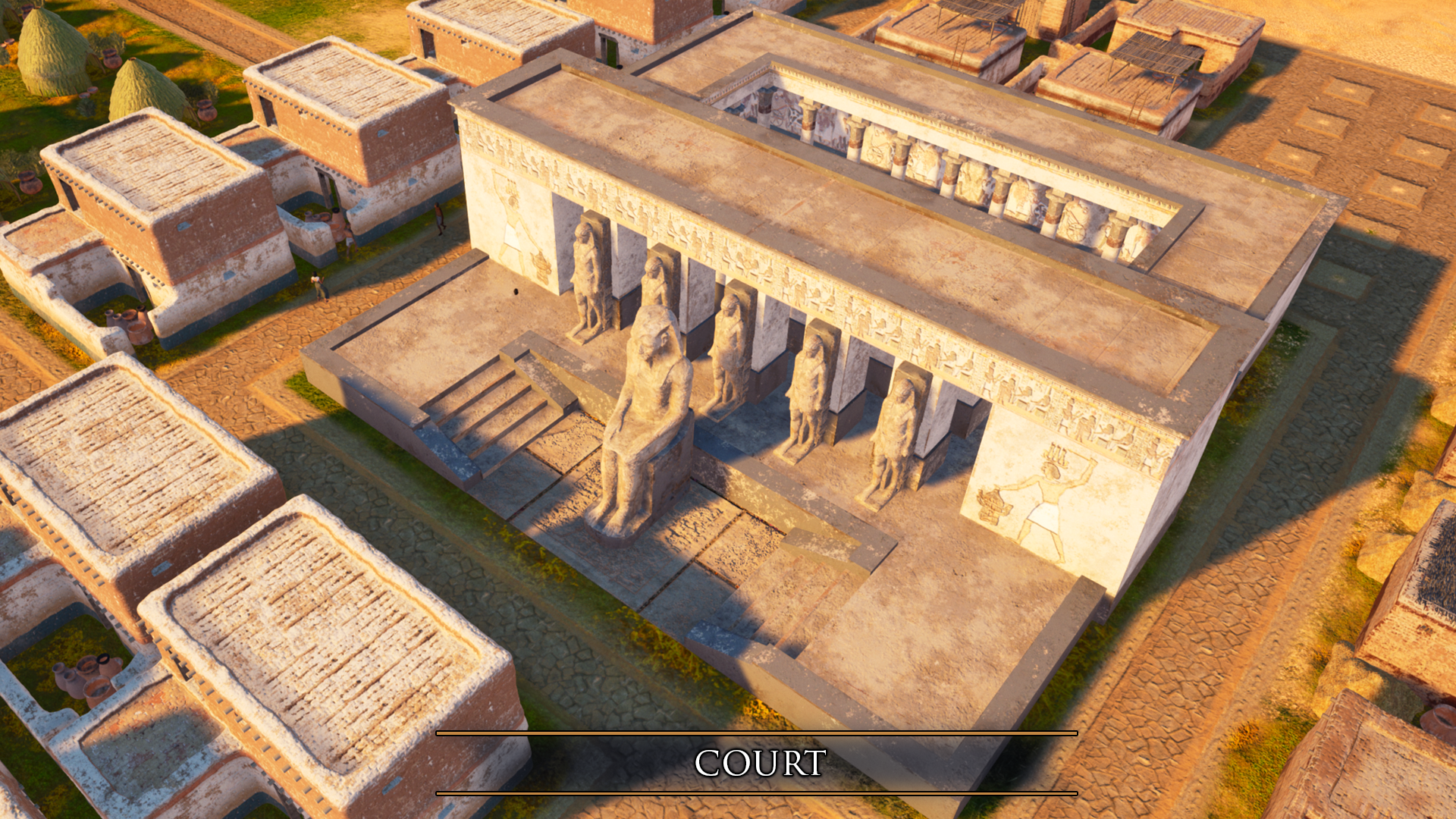

BEHIND THE SCENES
For today's Behind the Scenes, we've prepared one of the in-game entertainment buildings which we've discussed briefly in DevBlog #28. The Bandstand is not only a static, typical building. On the wooden stage, we see colorfully dressed dancers and in-game you will be able to admire their interesting and captivating dance (of course, provided that we do not prepare a short film for you in advance, if we have enough time, which, as always, we have definitely too little!).
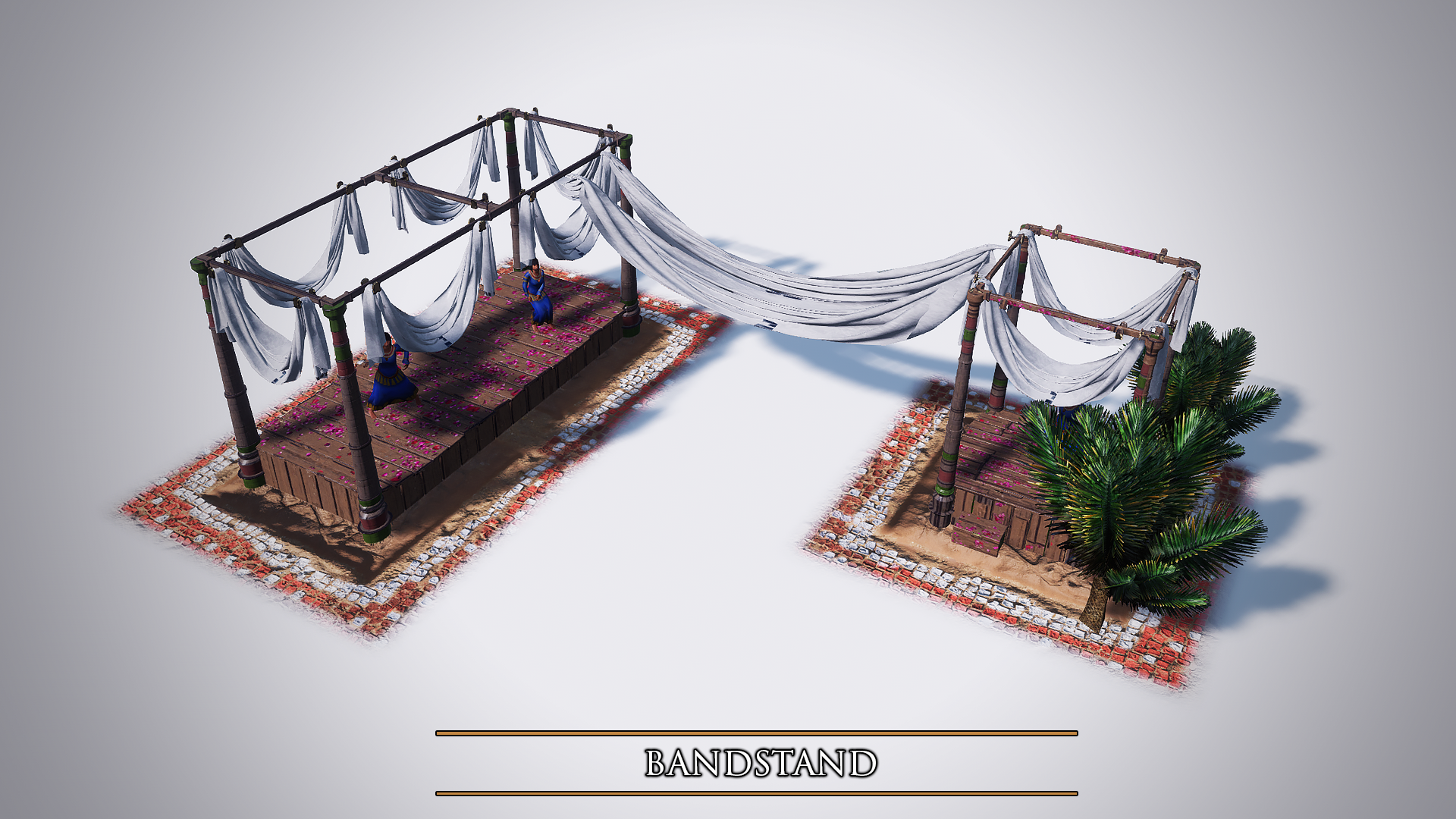
Looking forward to your thoughts about today's introduction! Don't forget to share them with us in the comments below. We love seeing so many valuable opinions from you guys and can't wait to show you another DevBlog and new content!
Next week as a small Christmas "news" we're going to announce more details about upcoming Builders of Egypt: Prologue relaunch and Builders of Egypt: Open Beta.
Stay tuned and see you in a few days Egyptian Nomarchs and Viziers!






